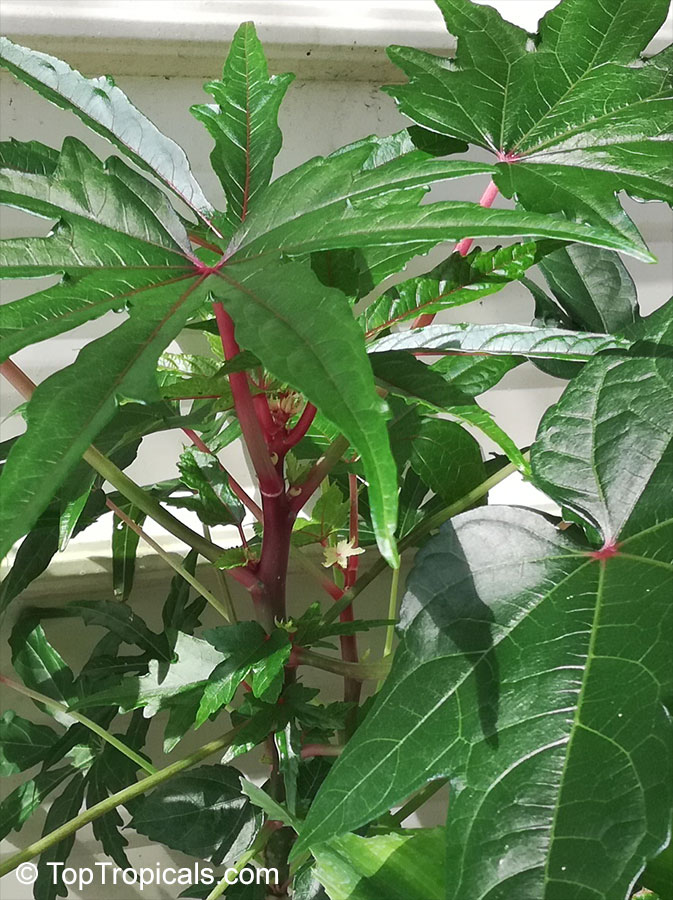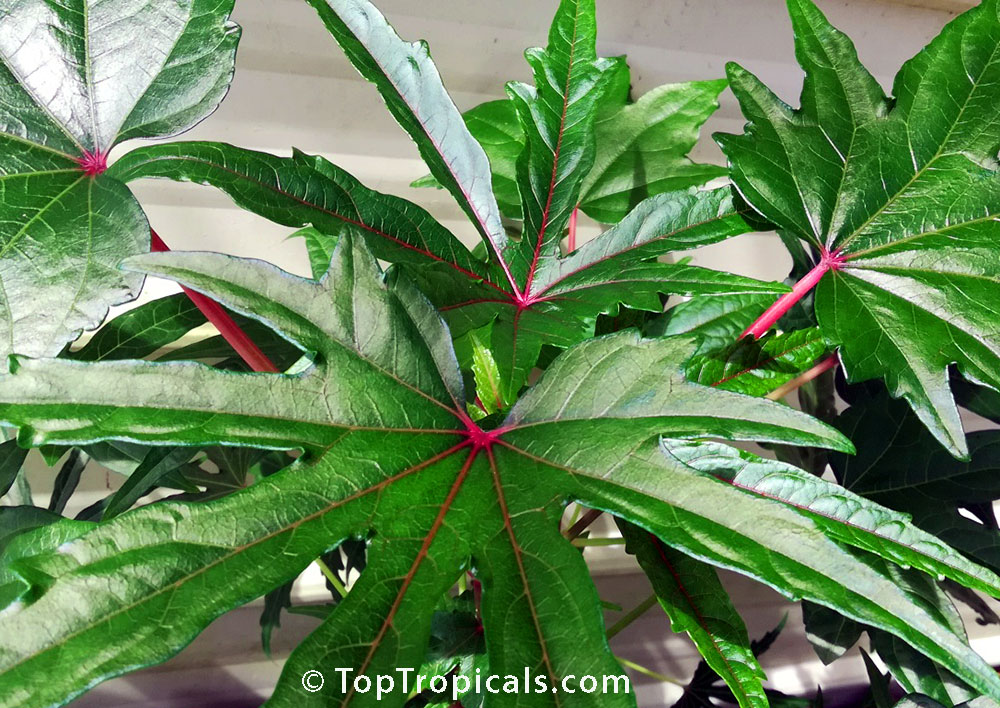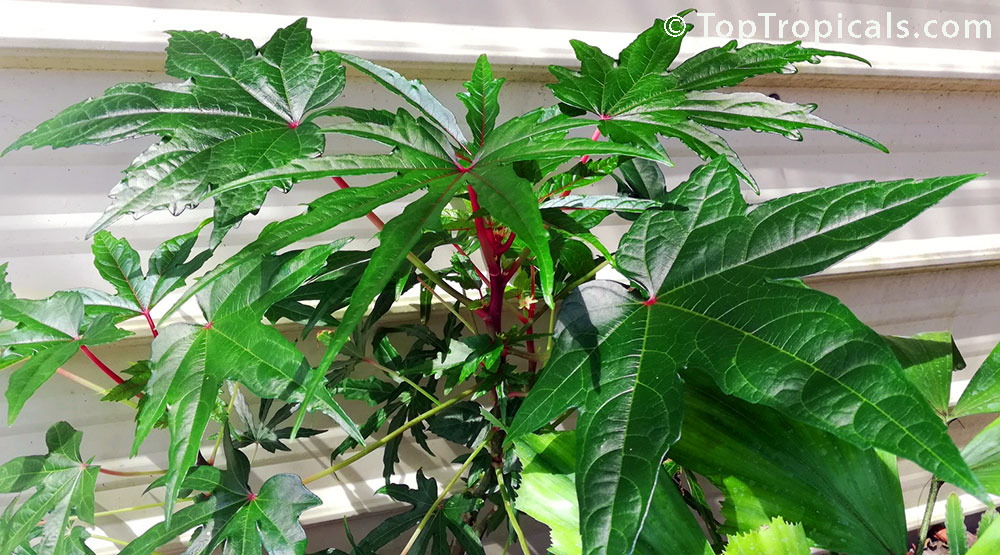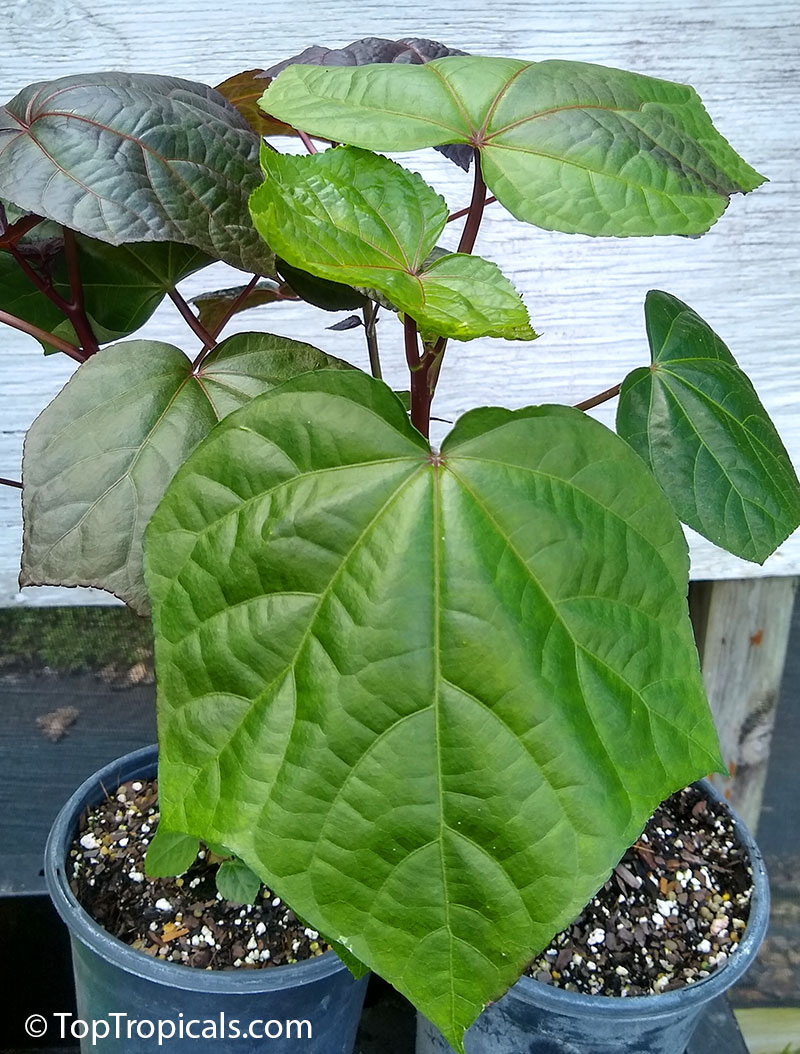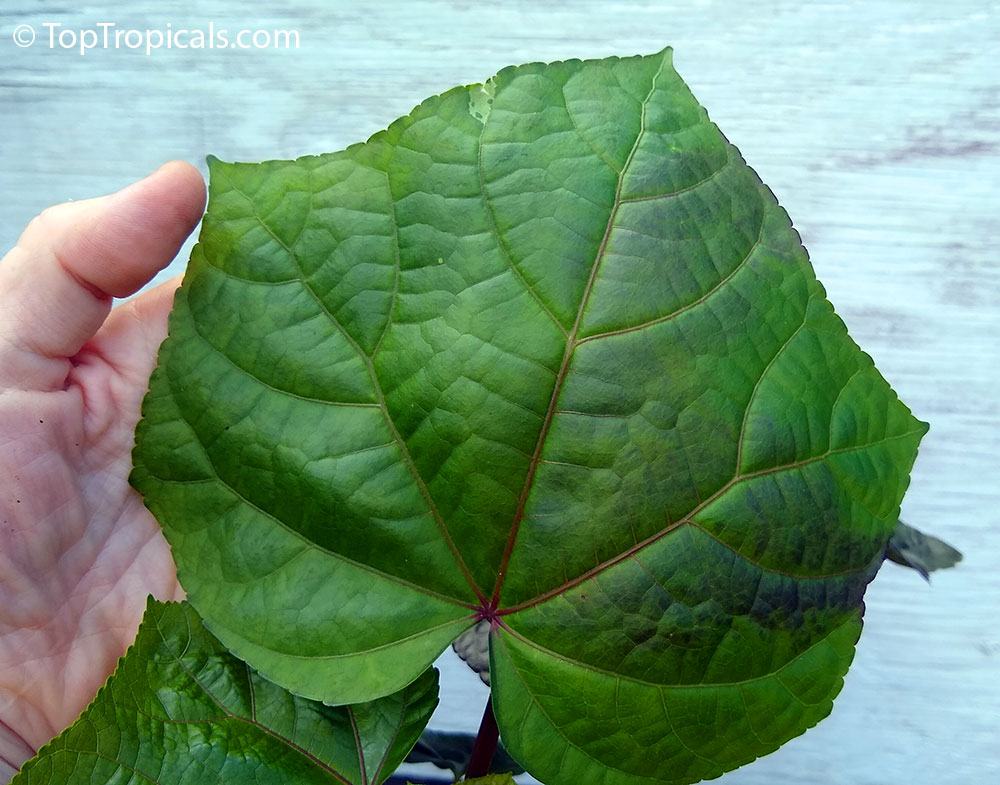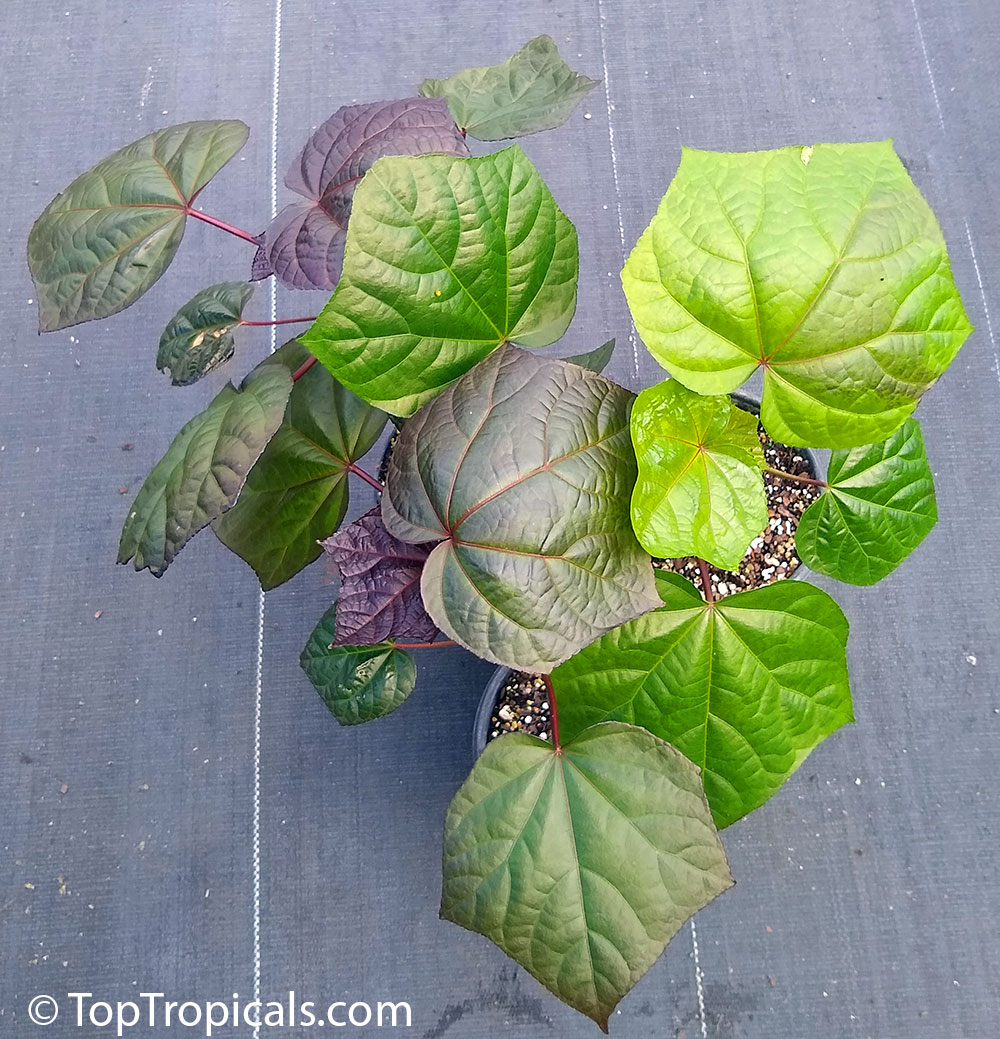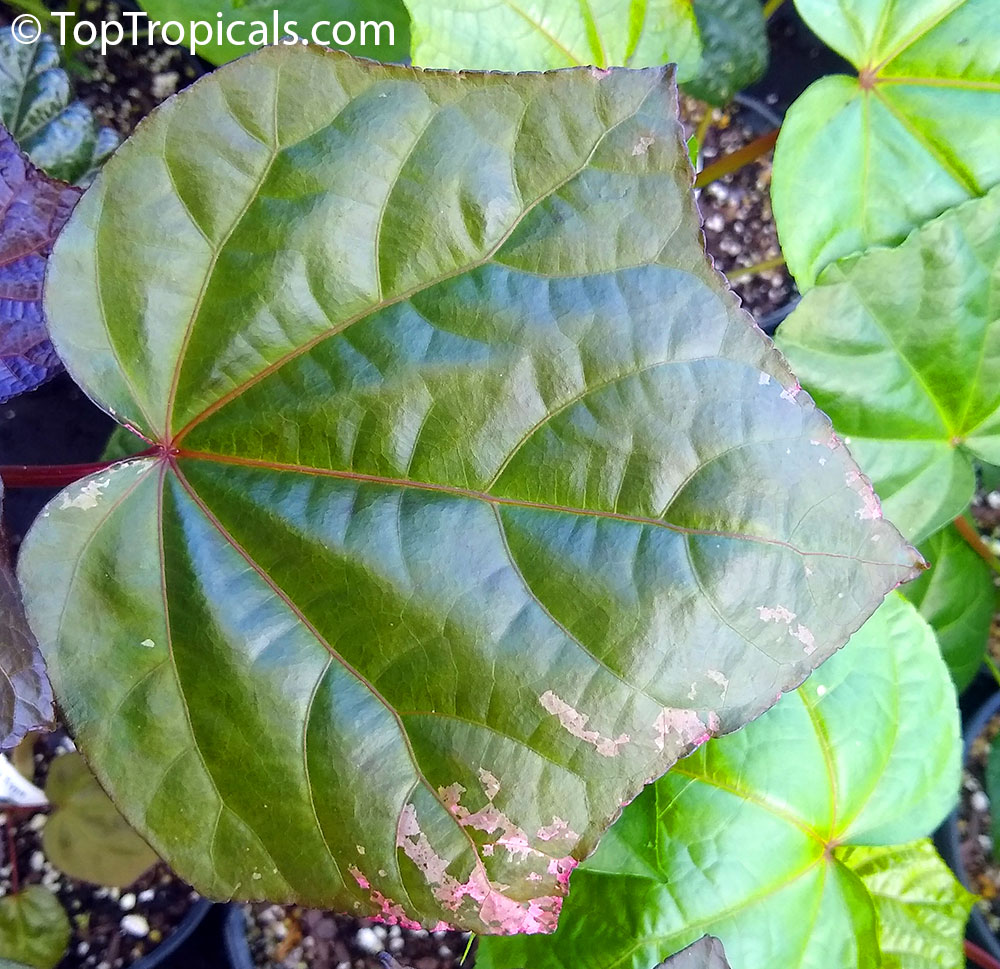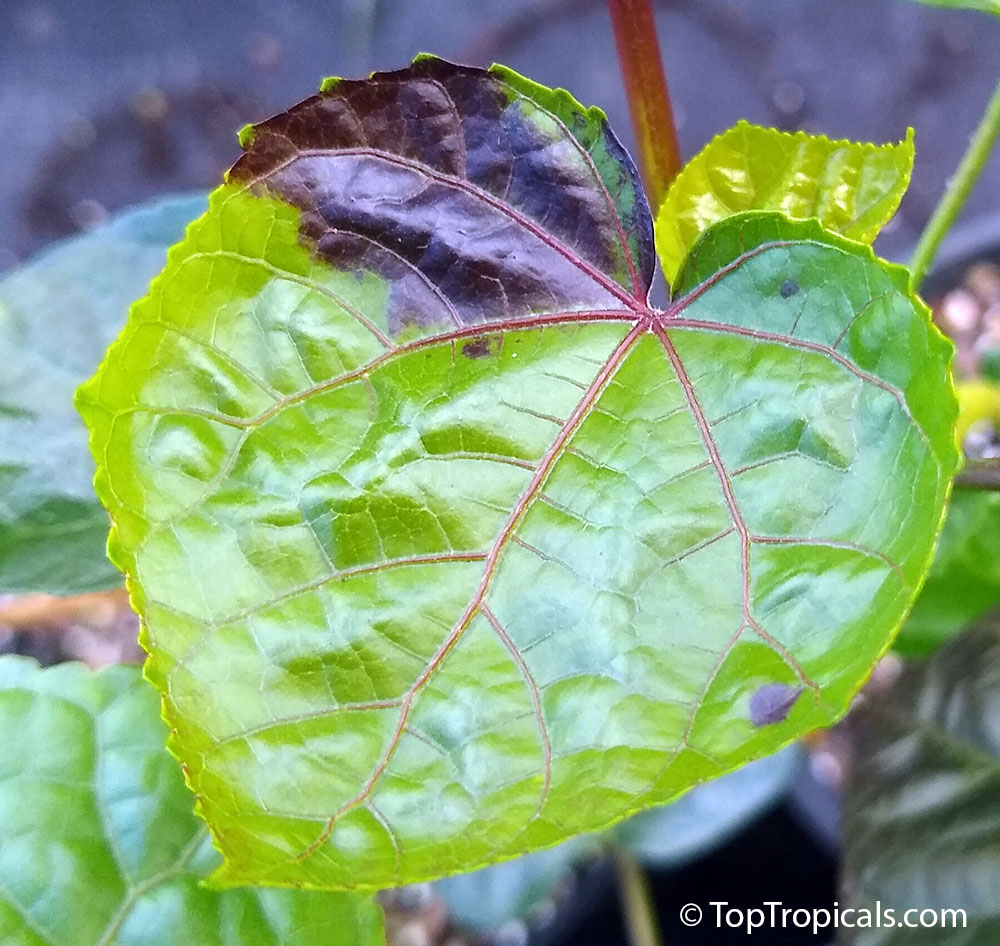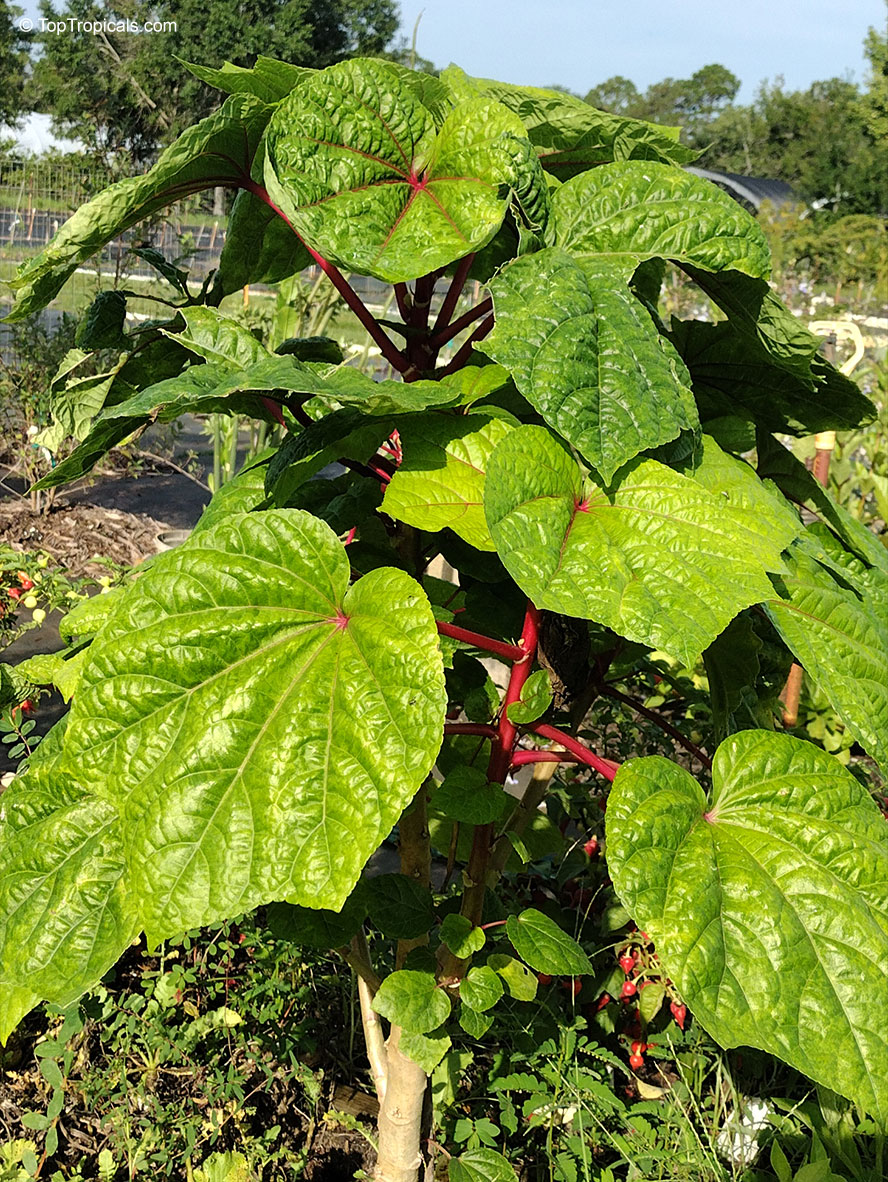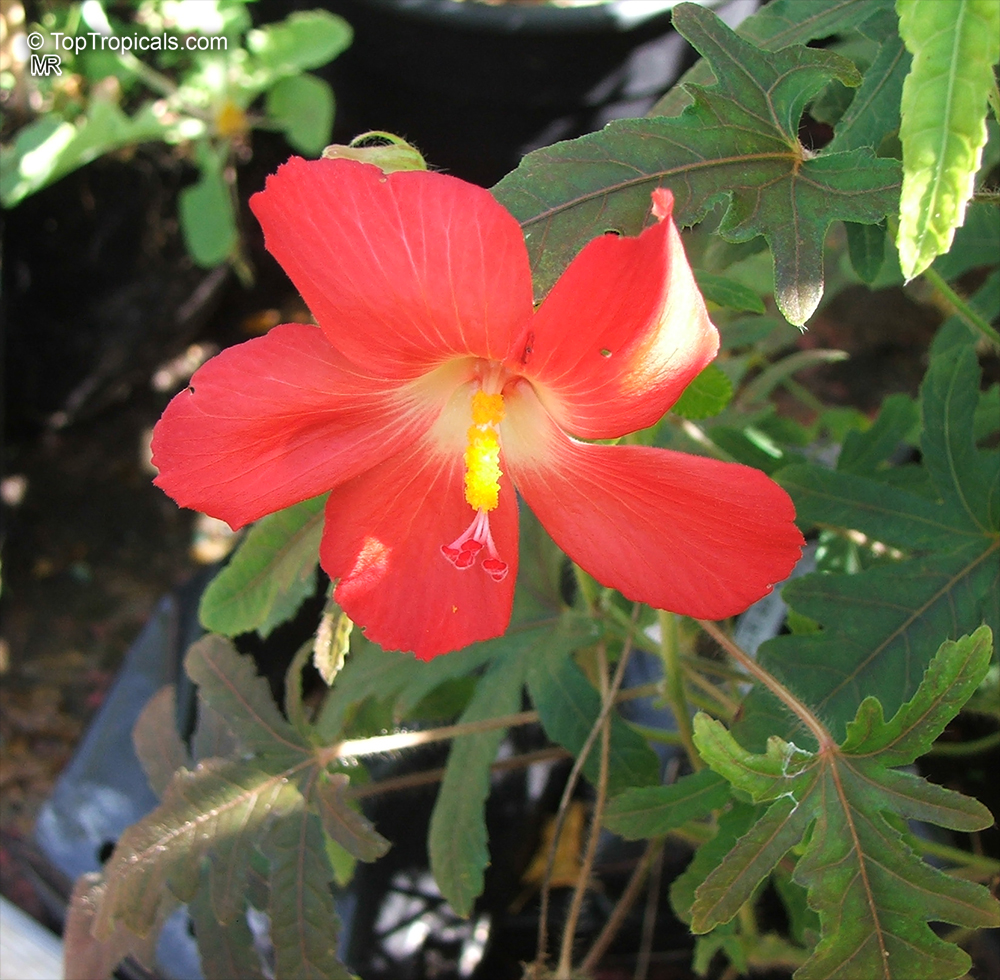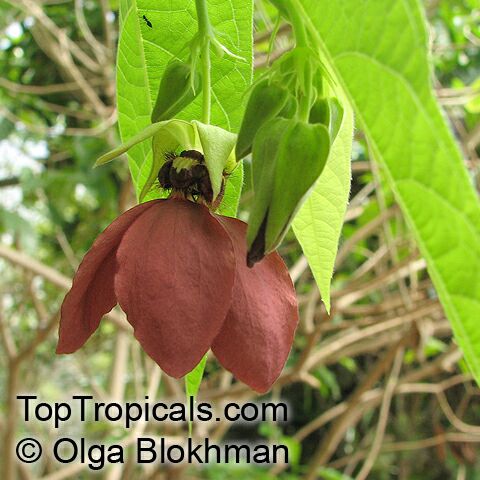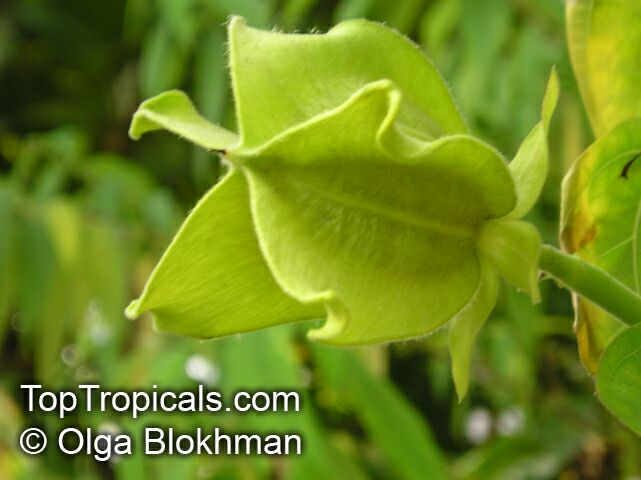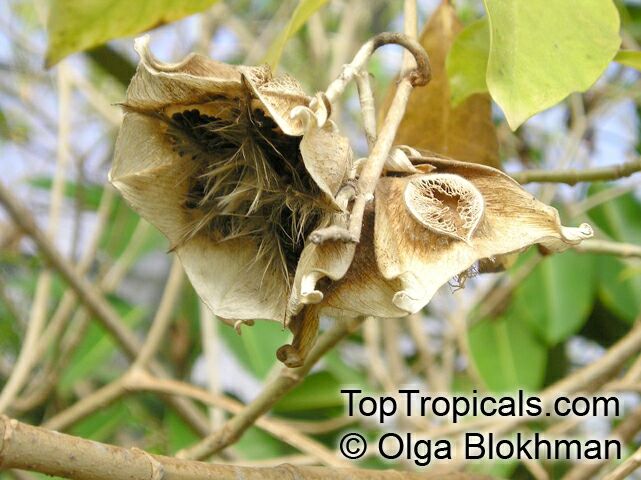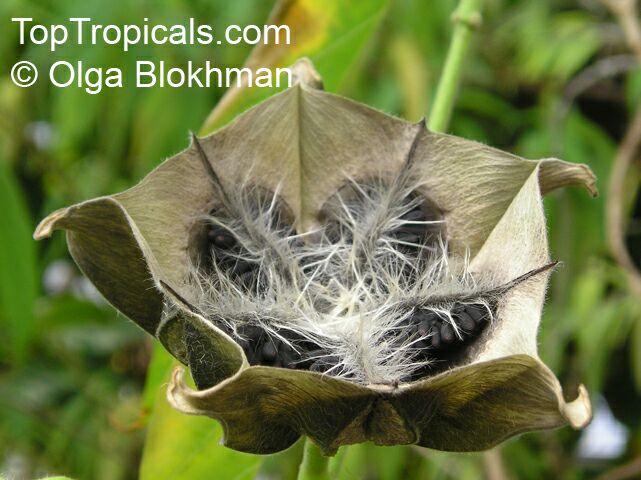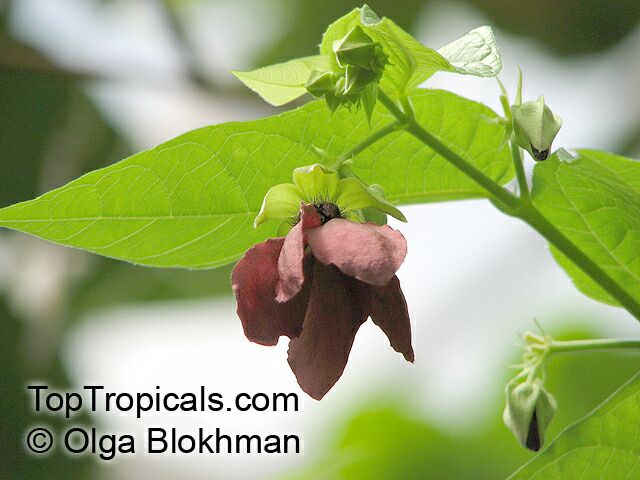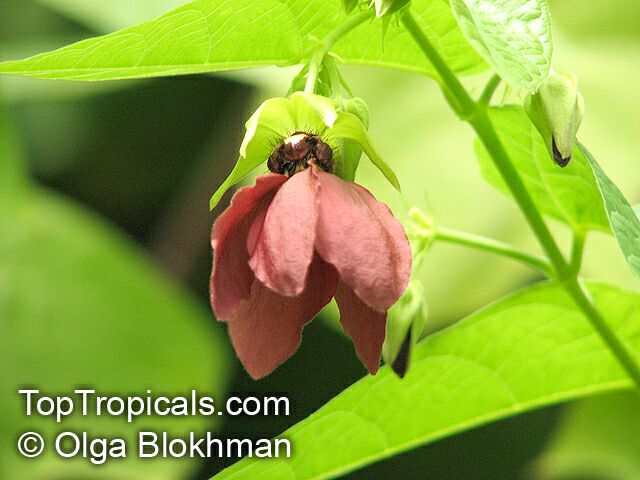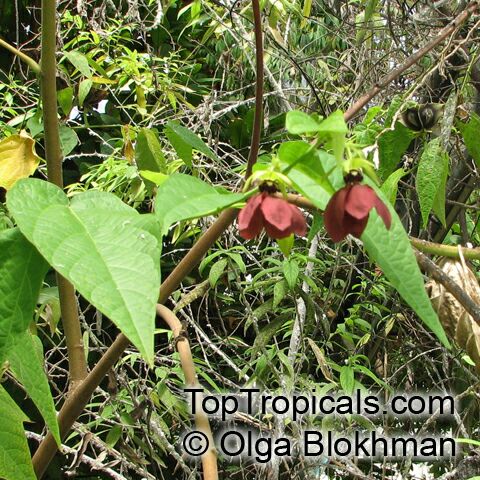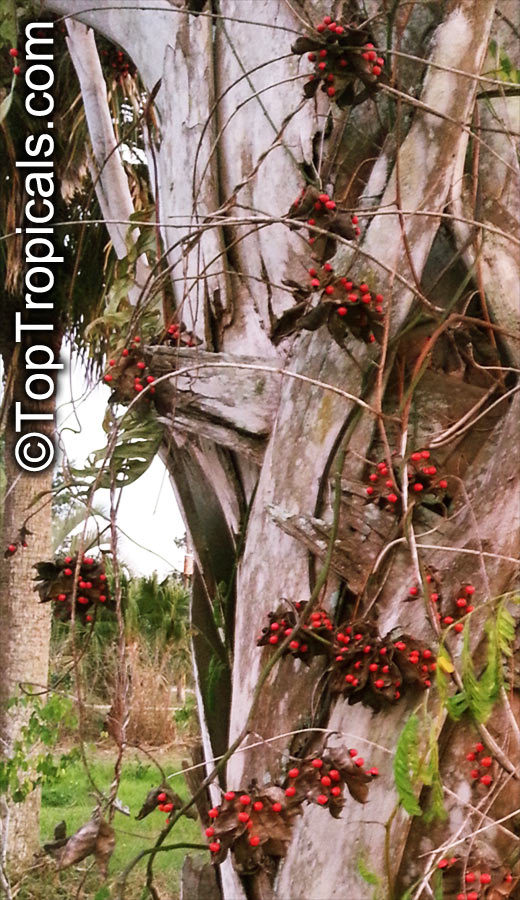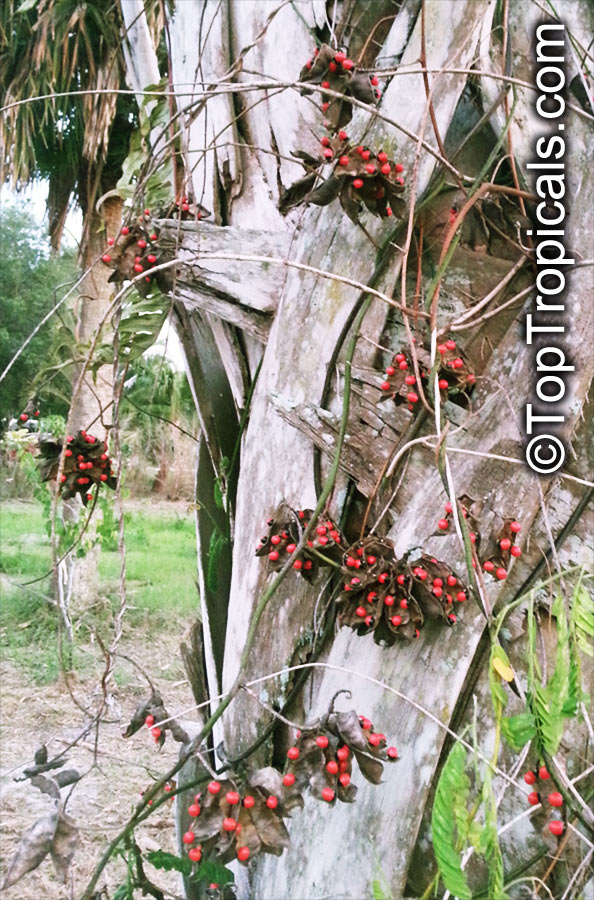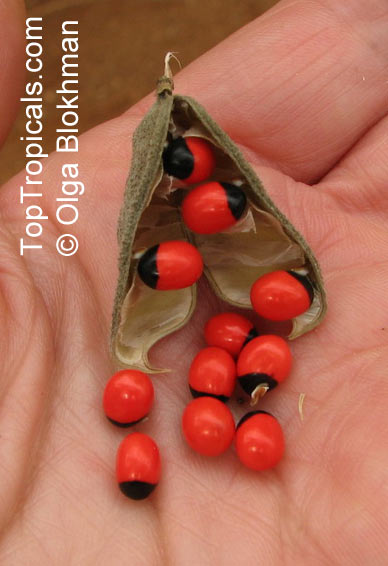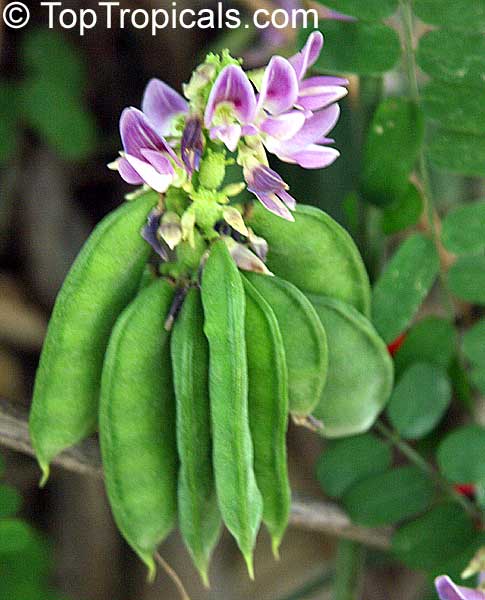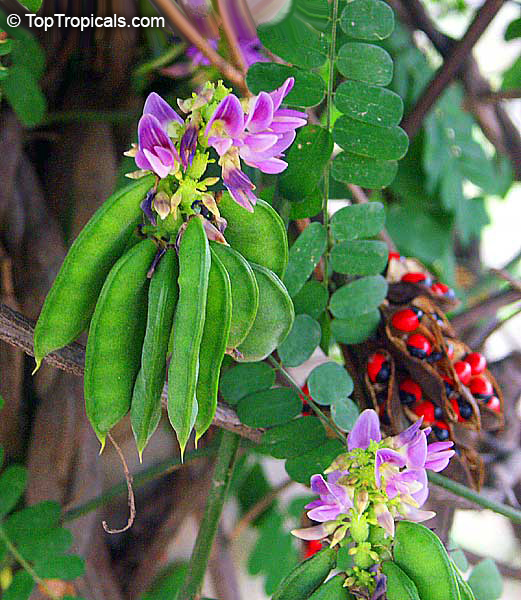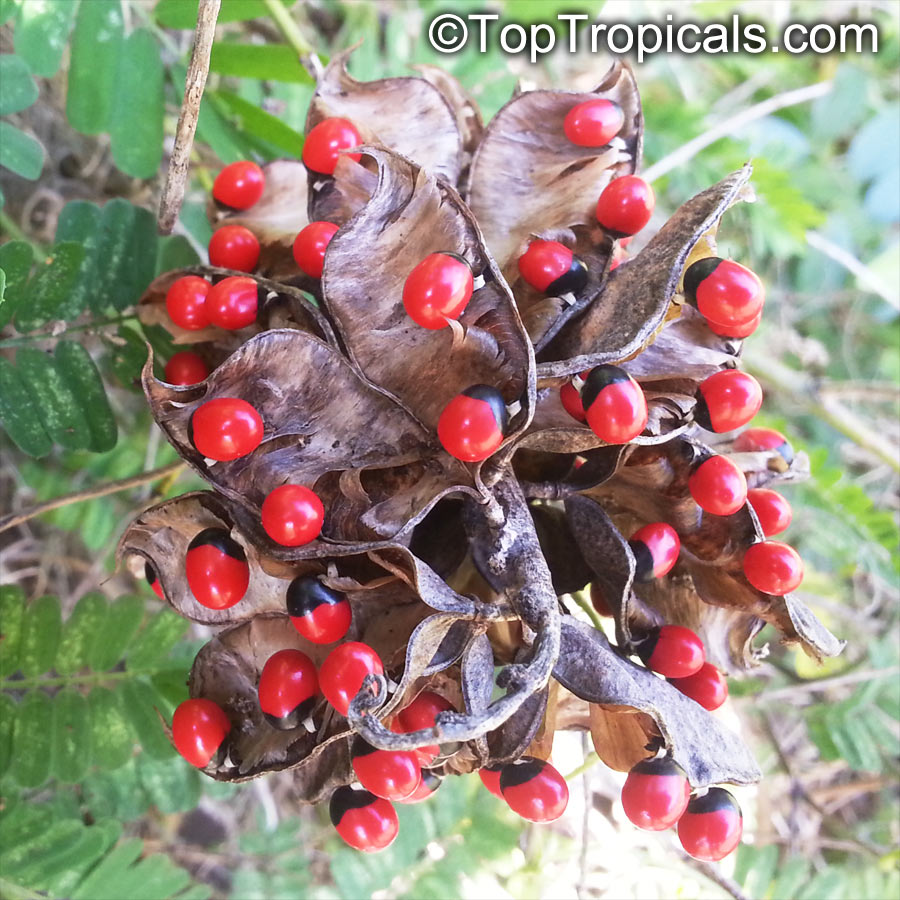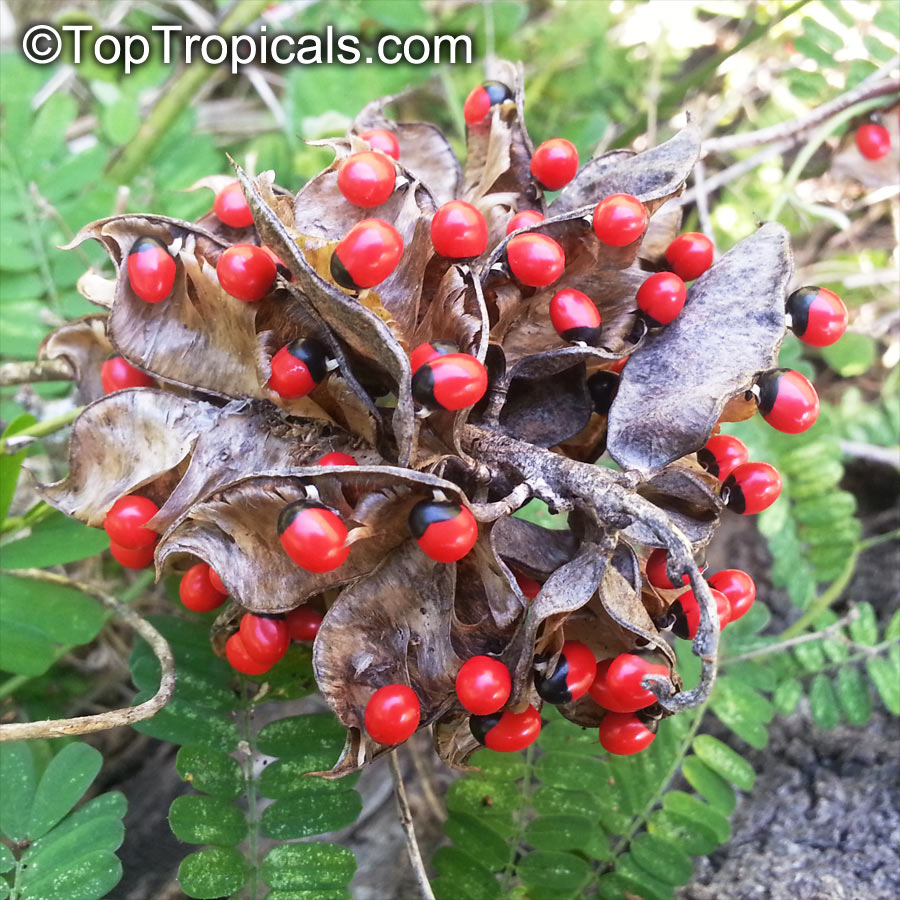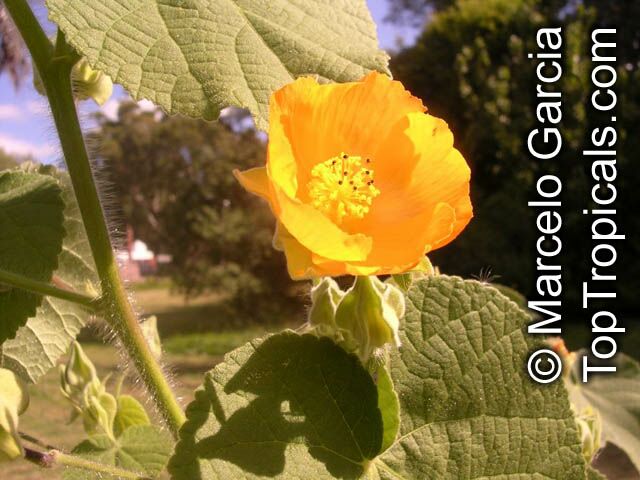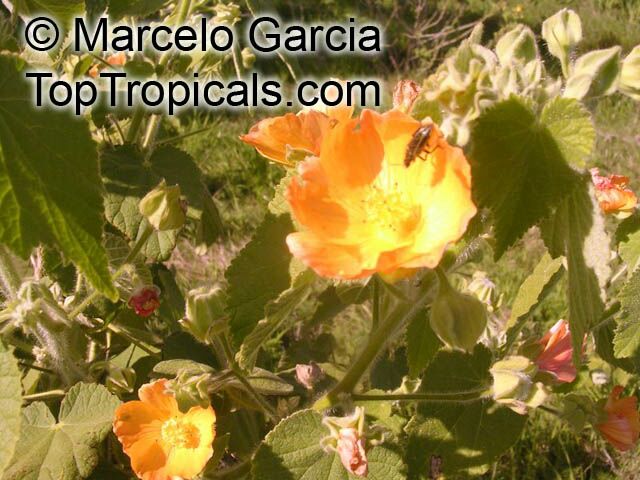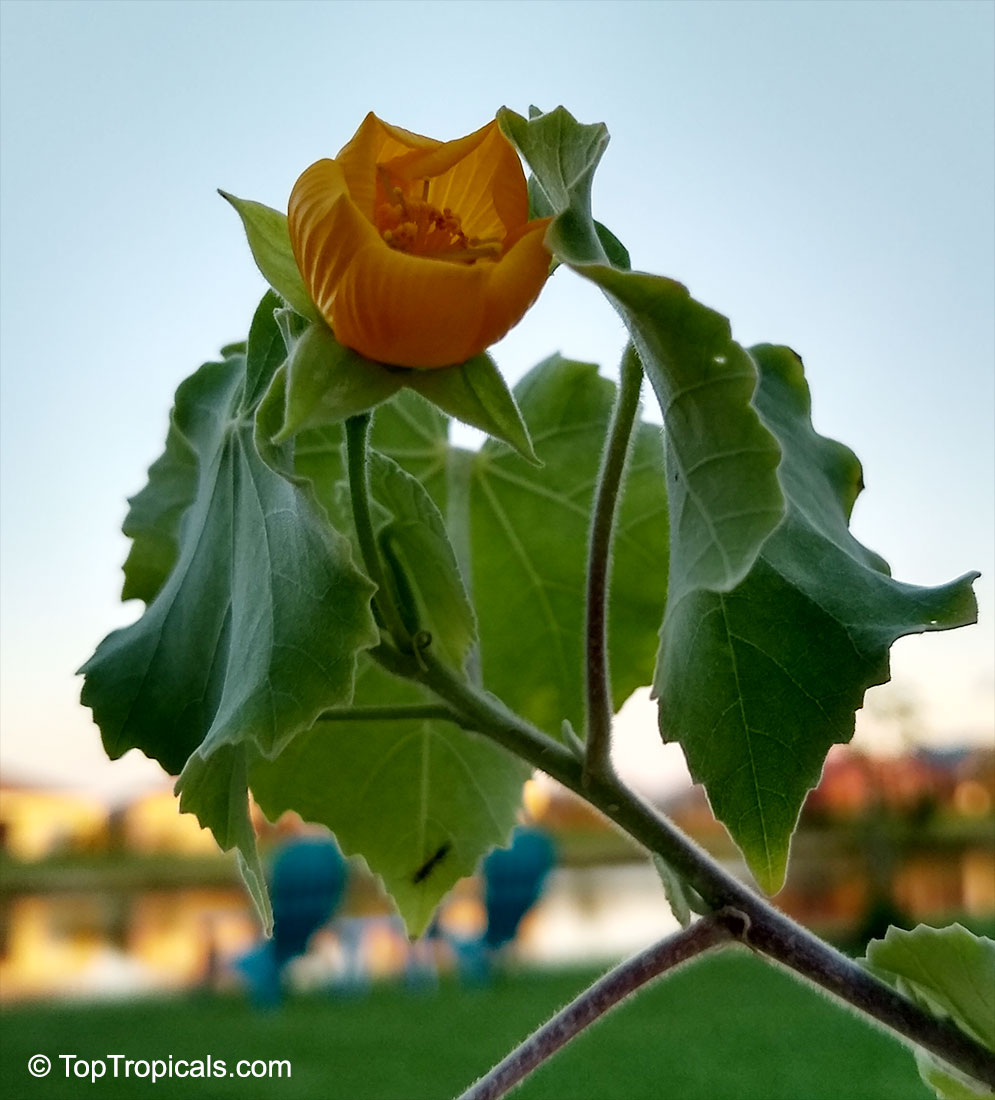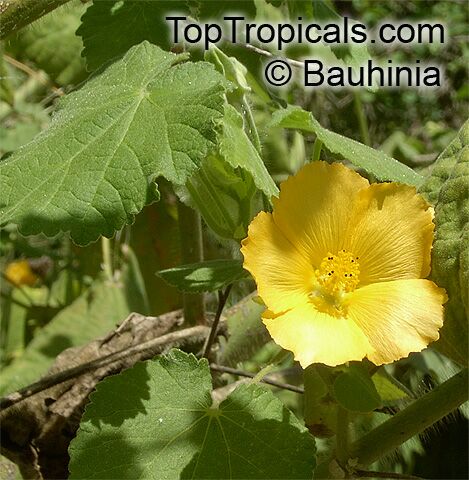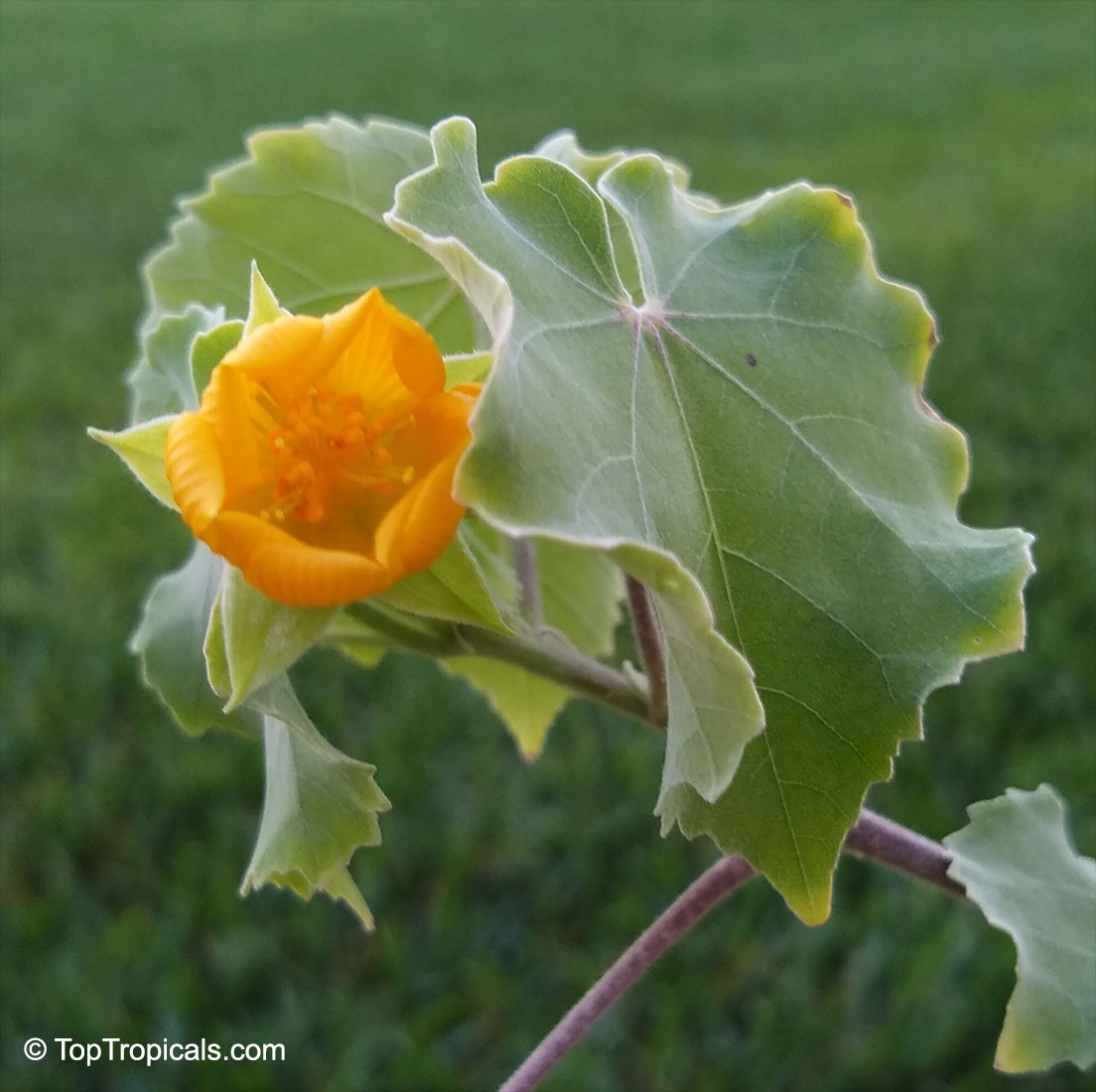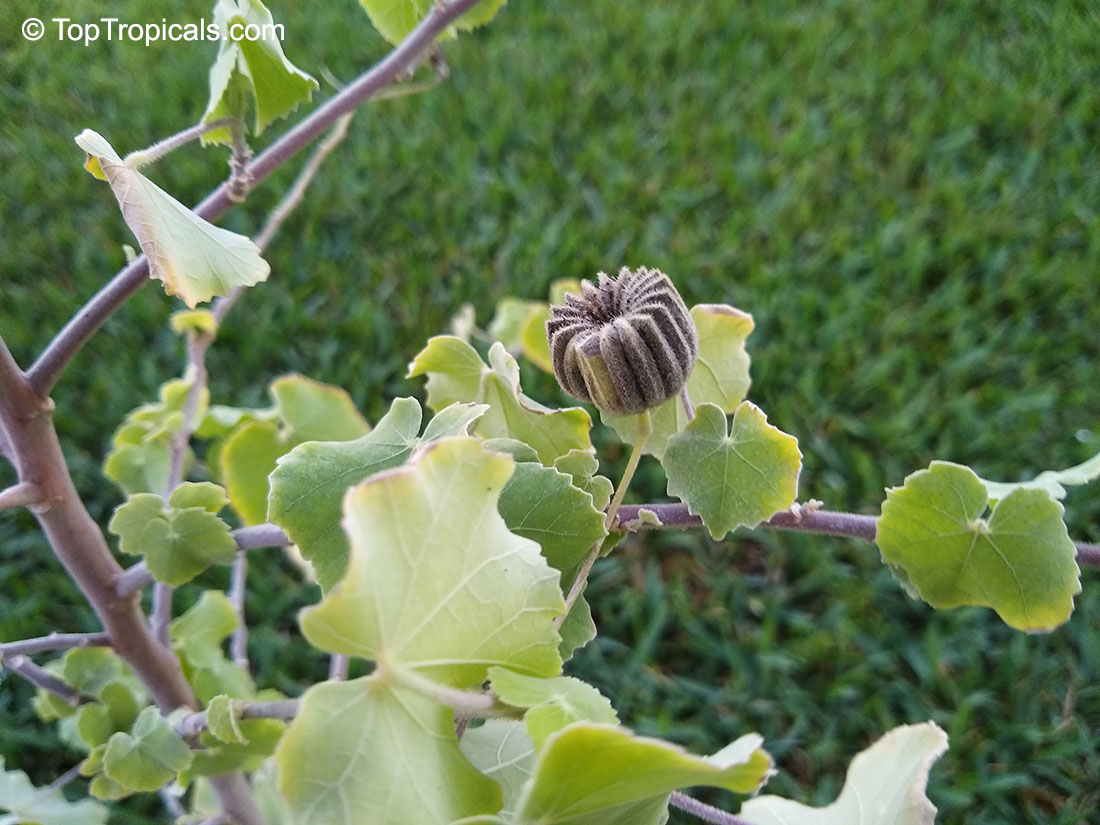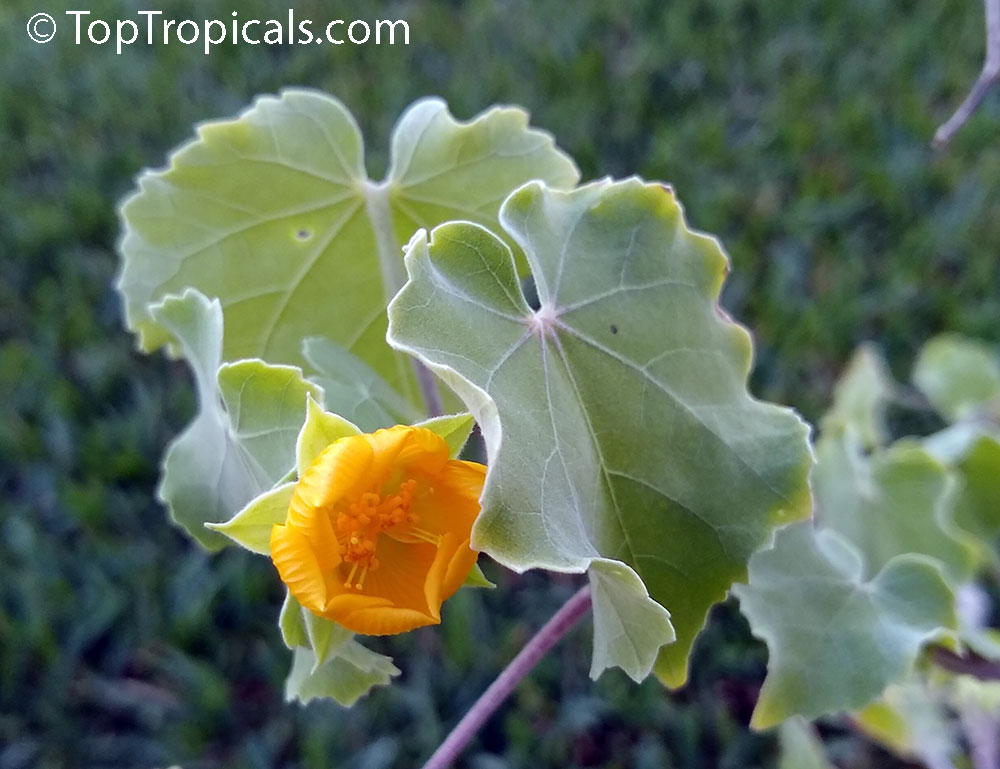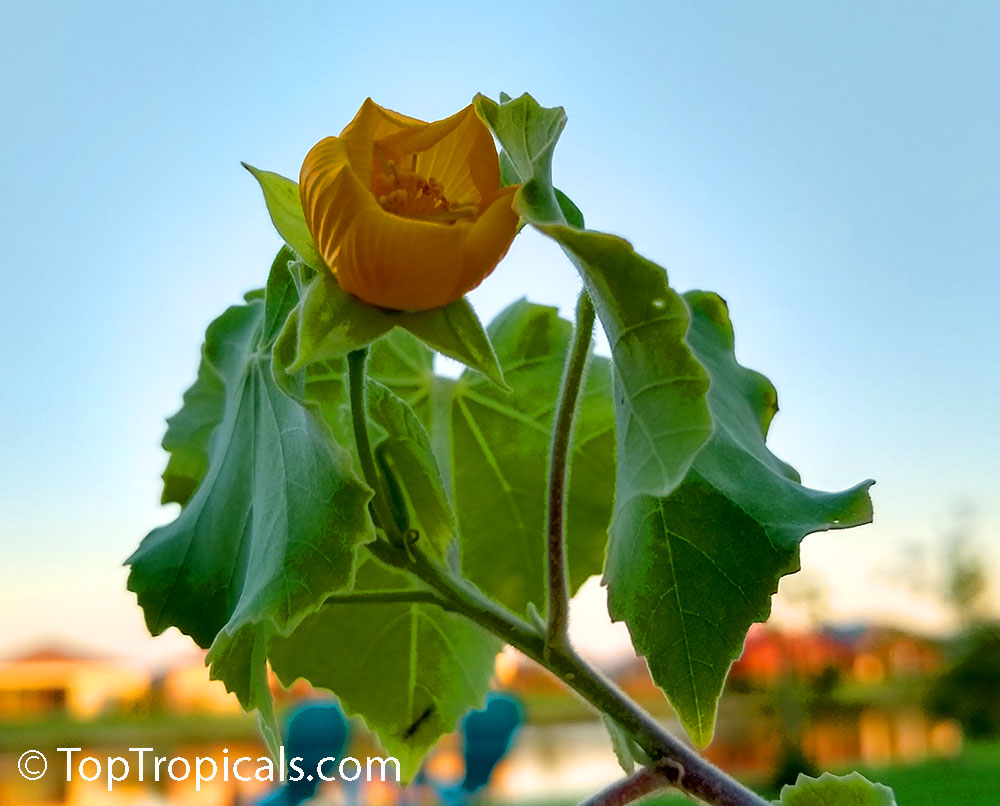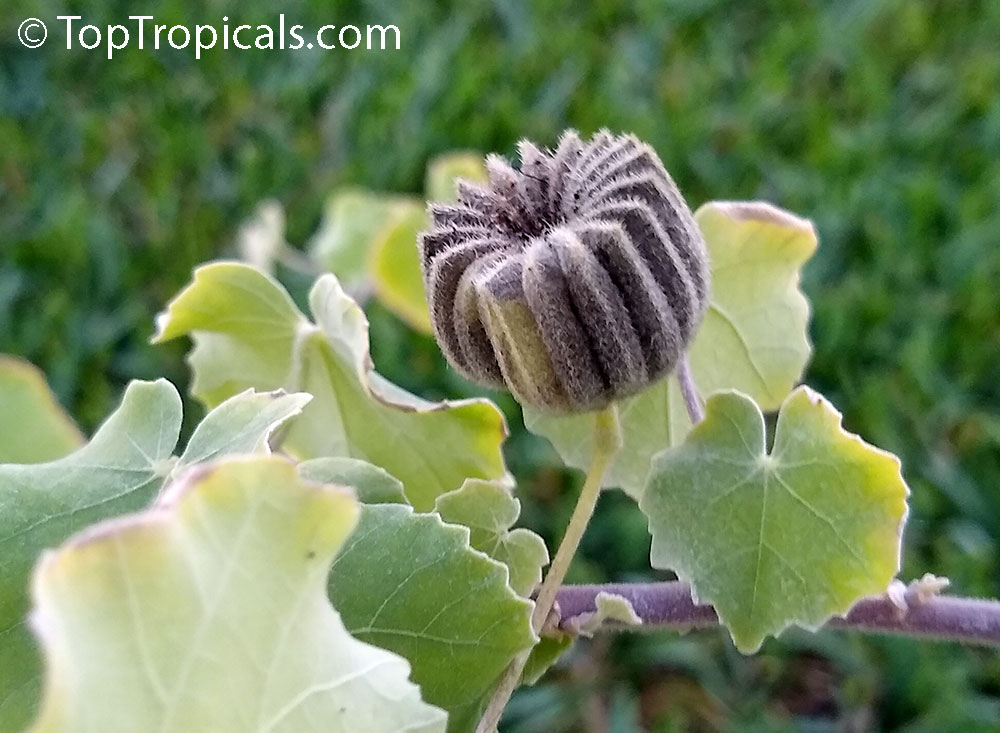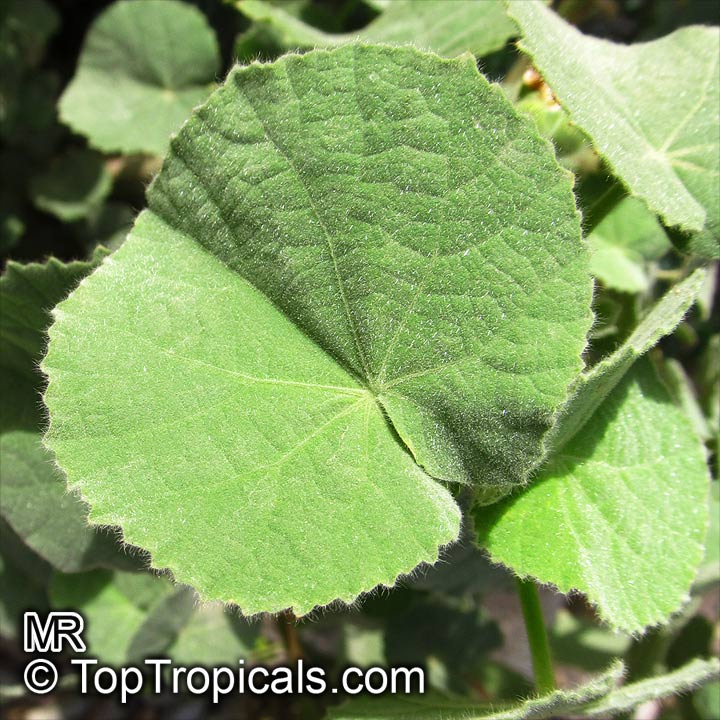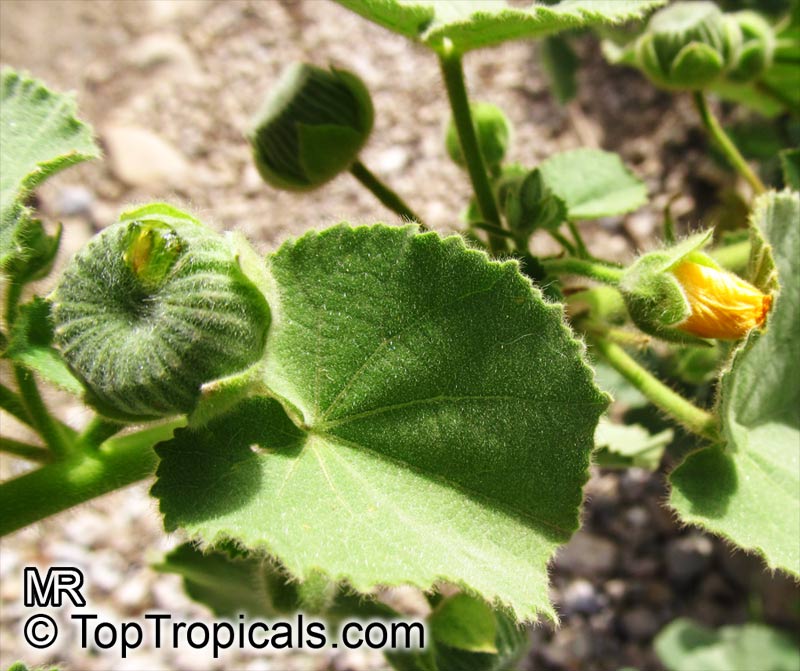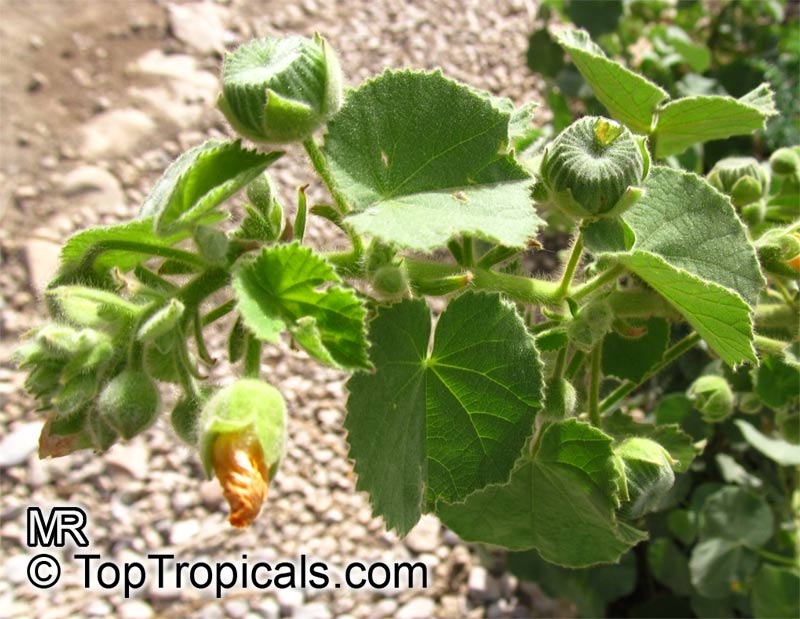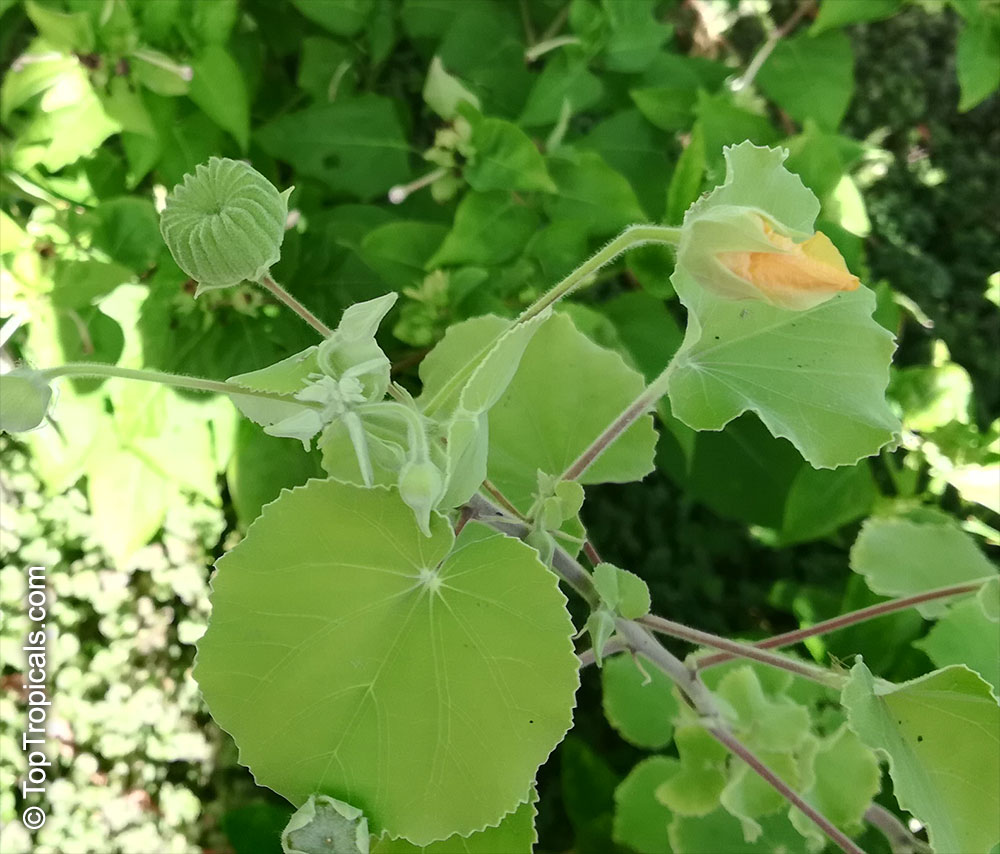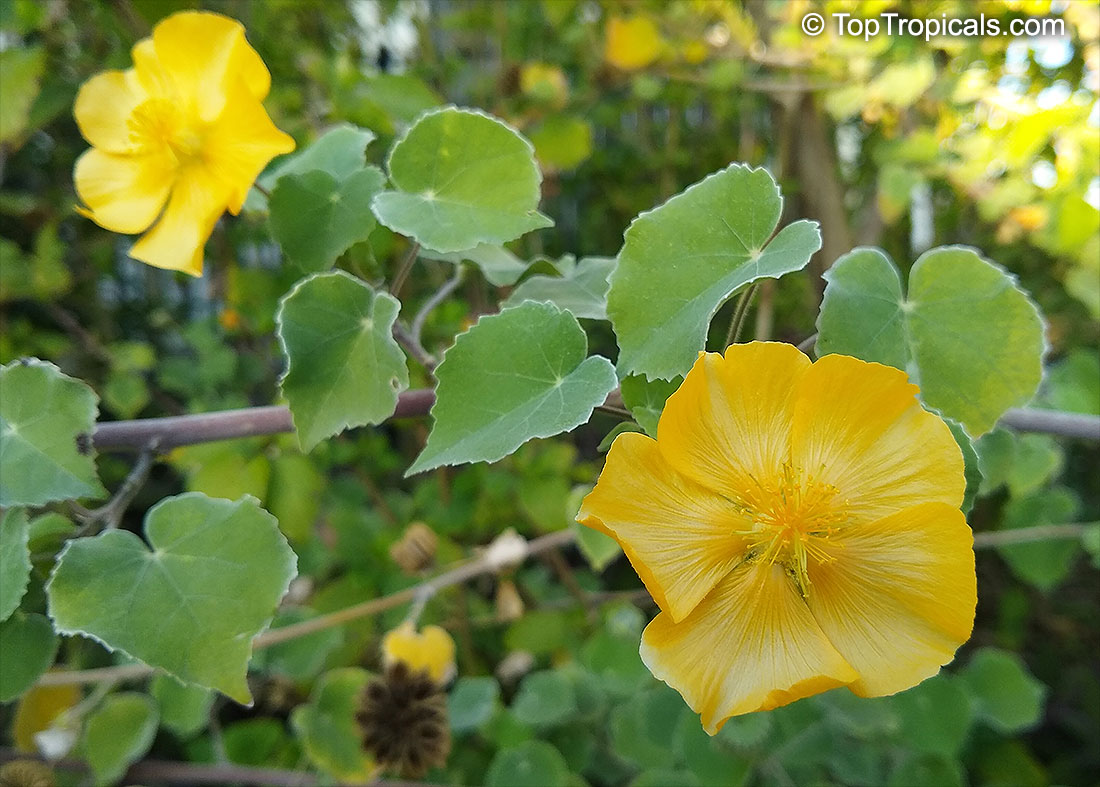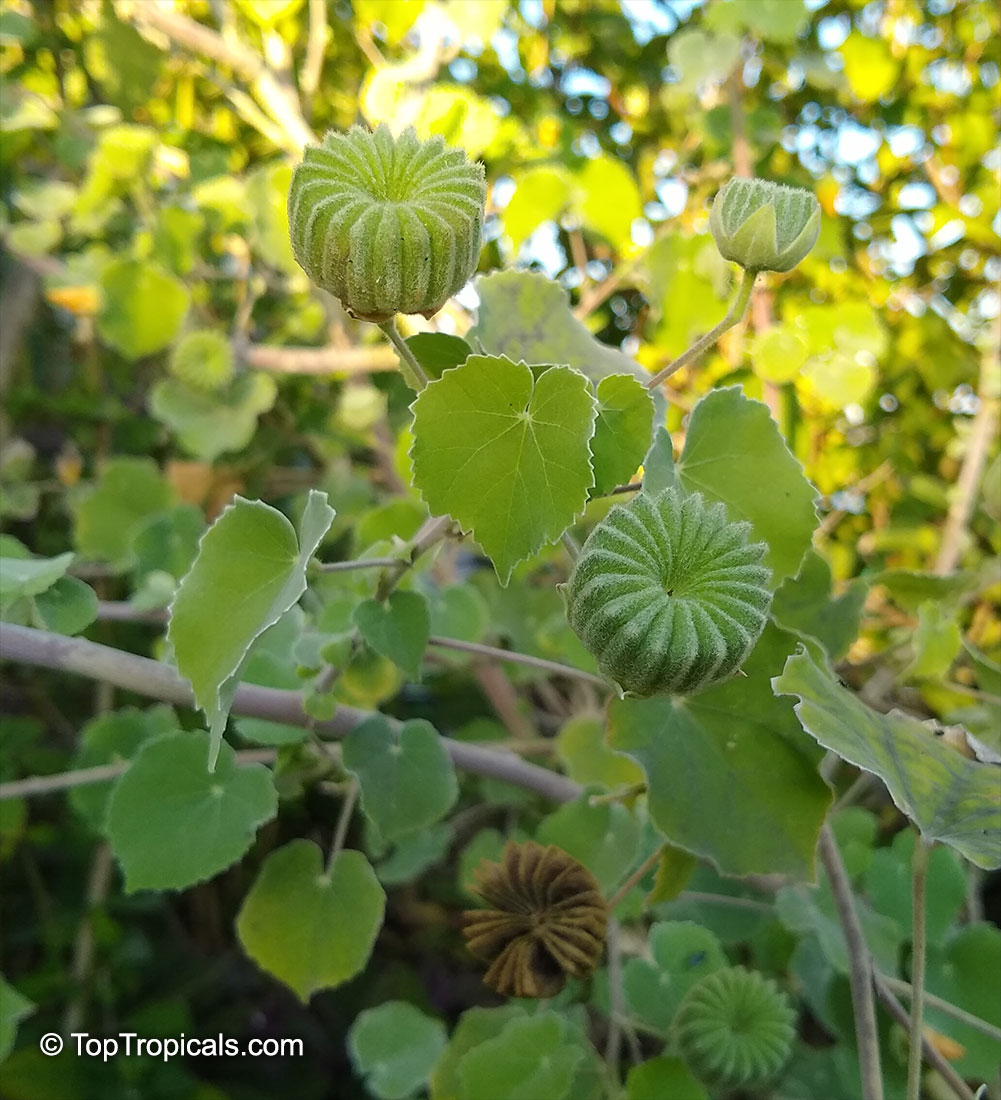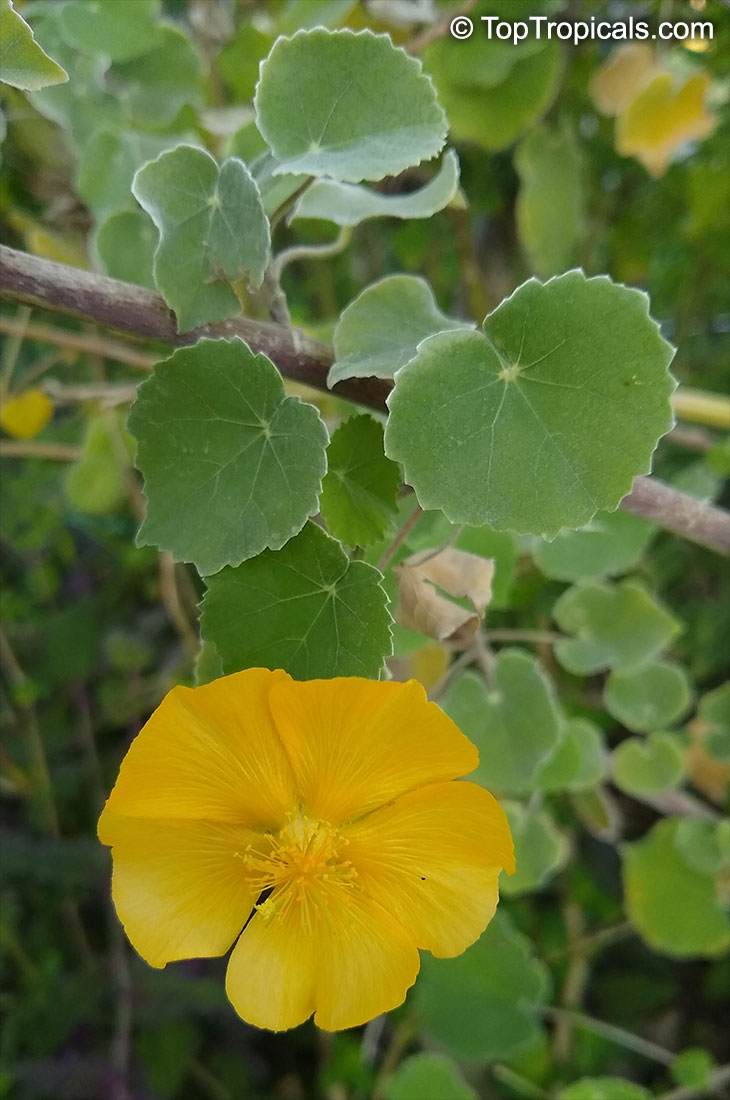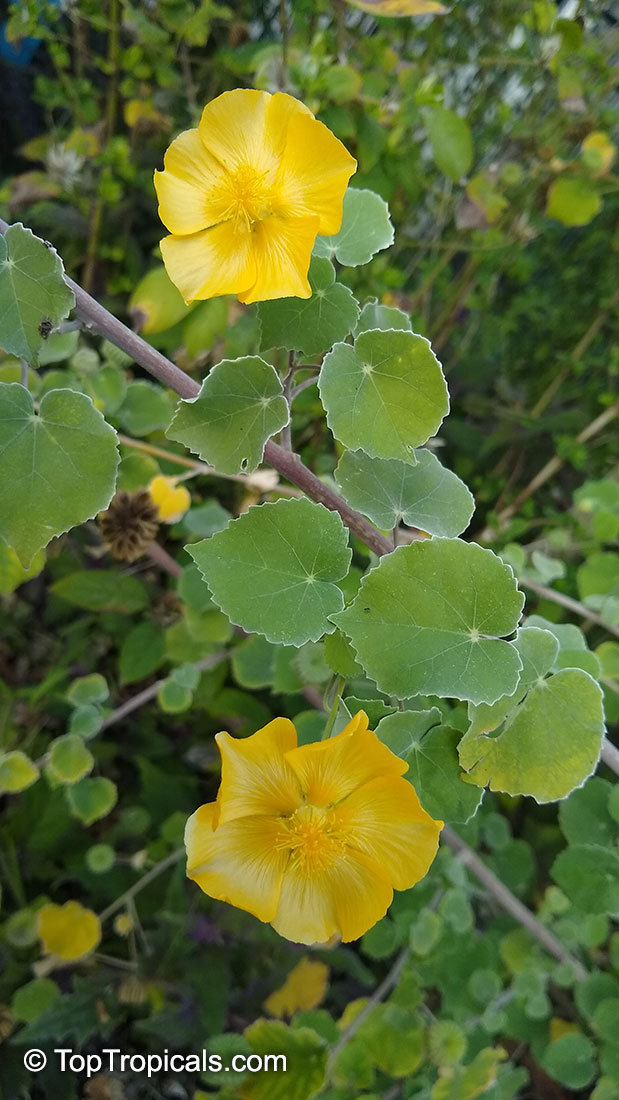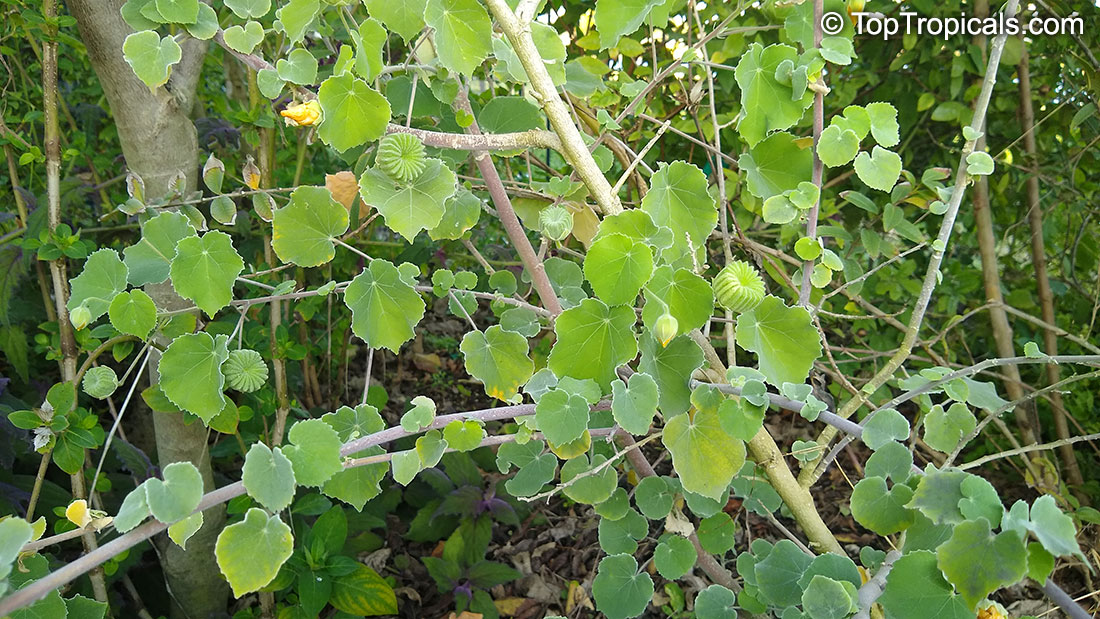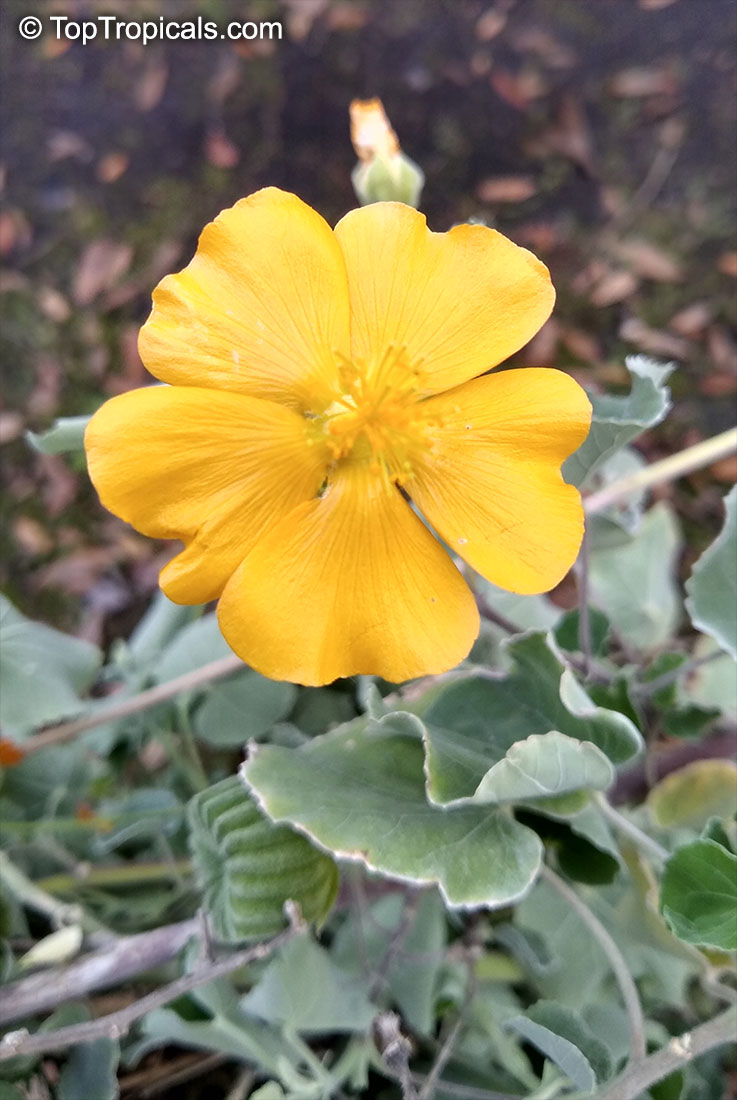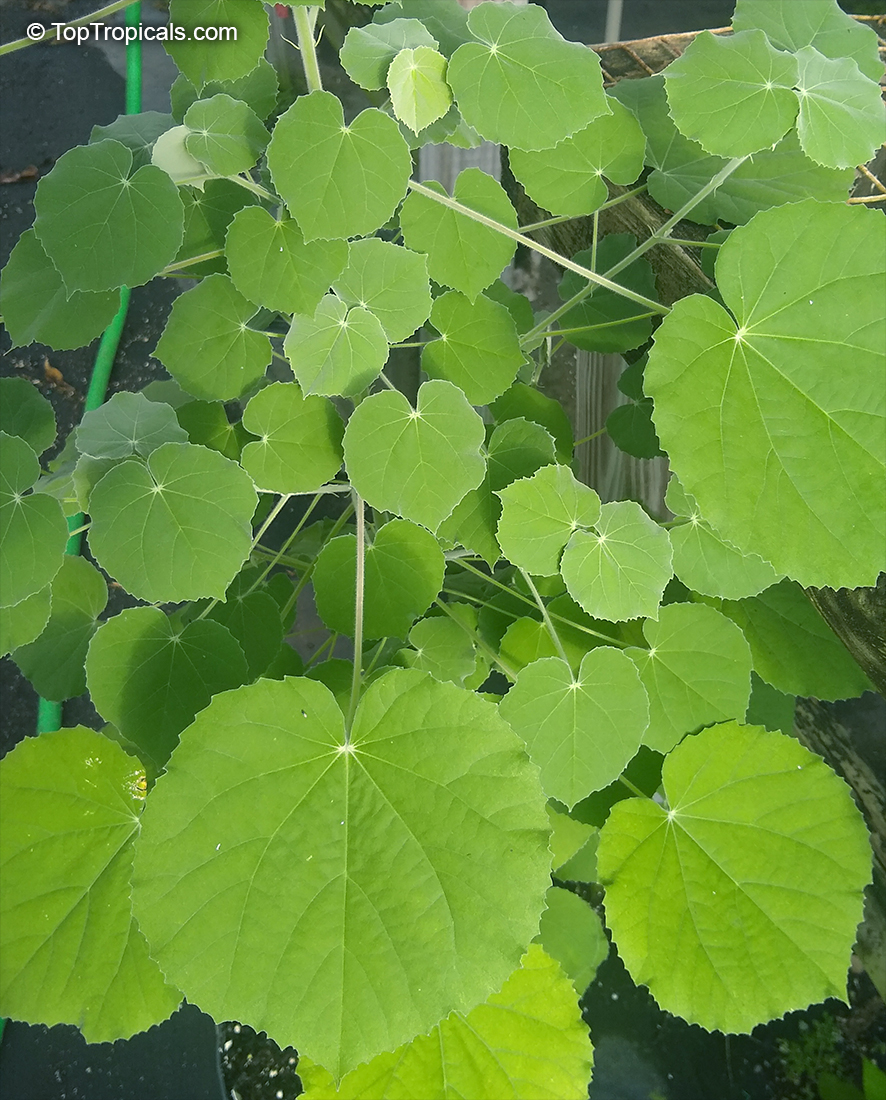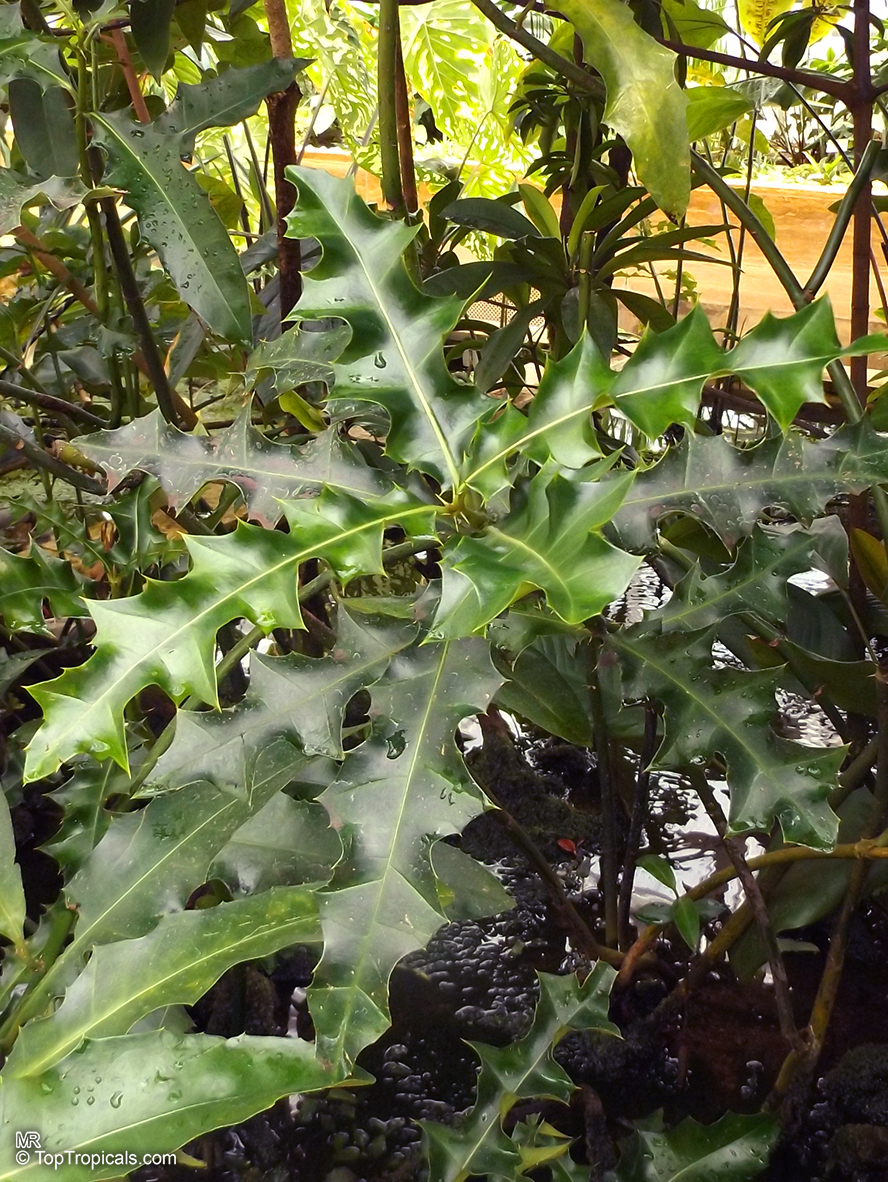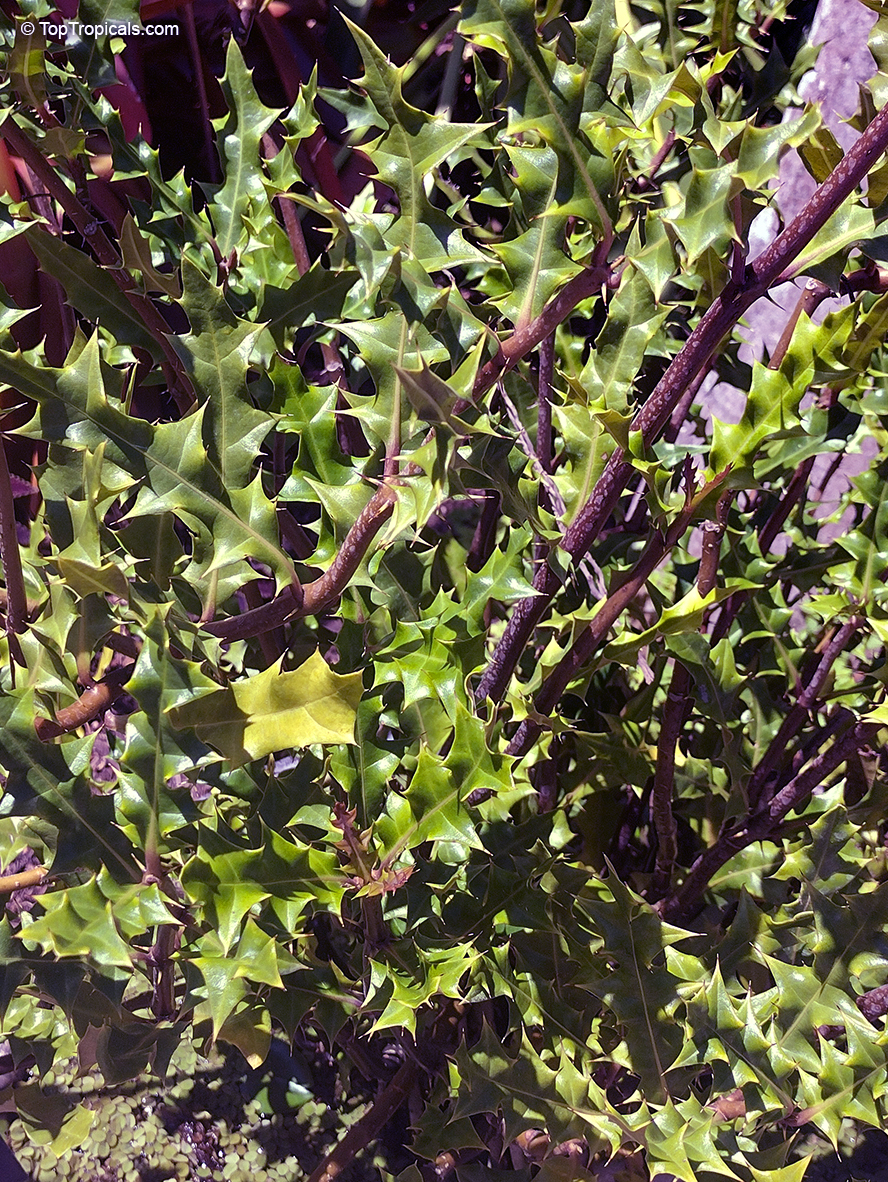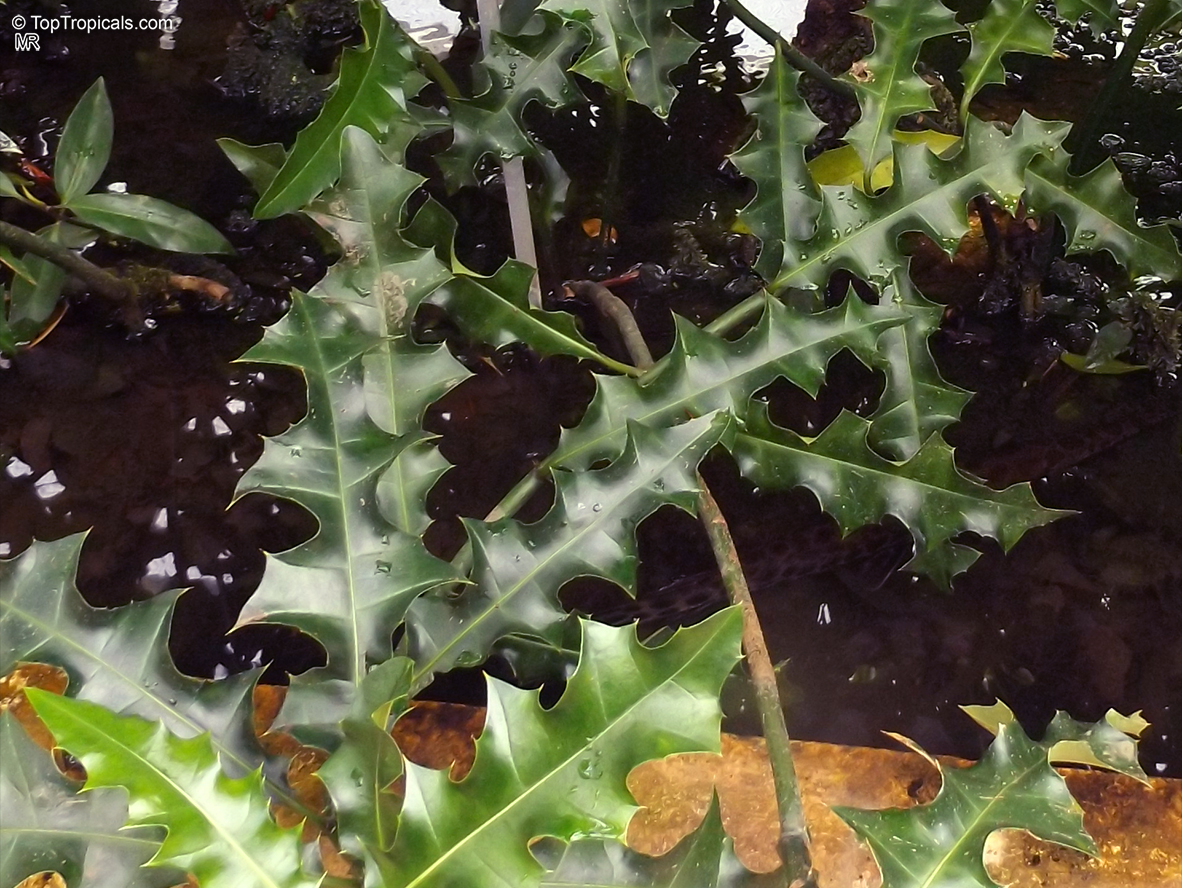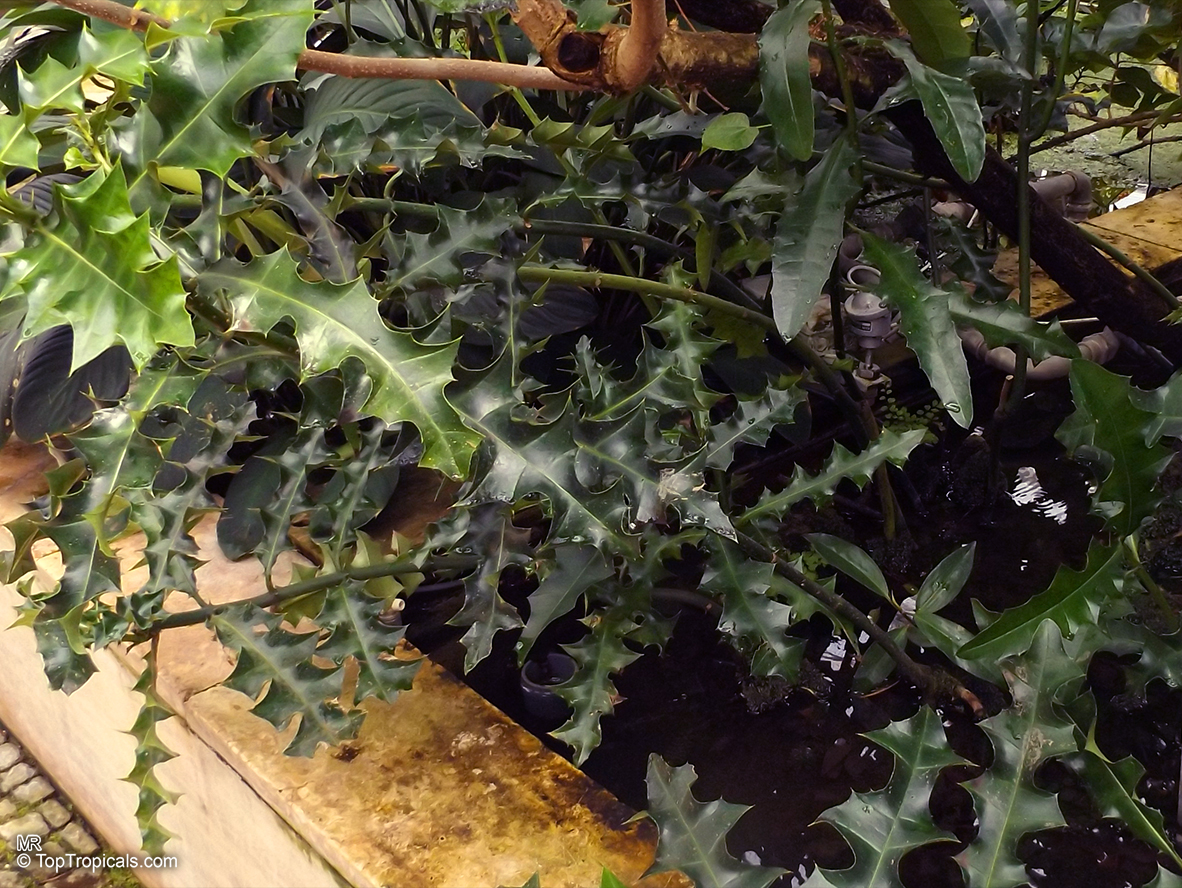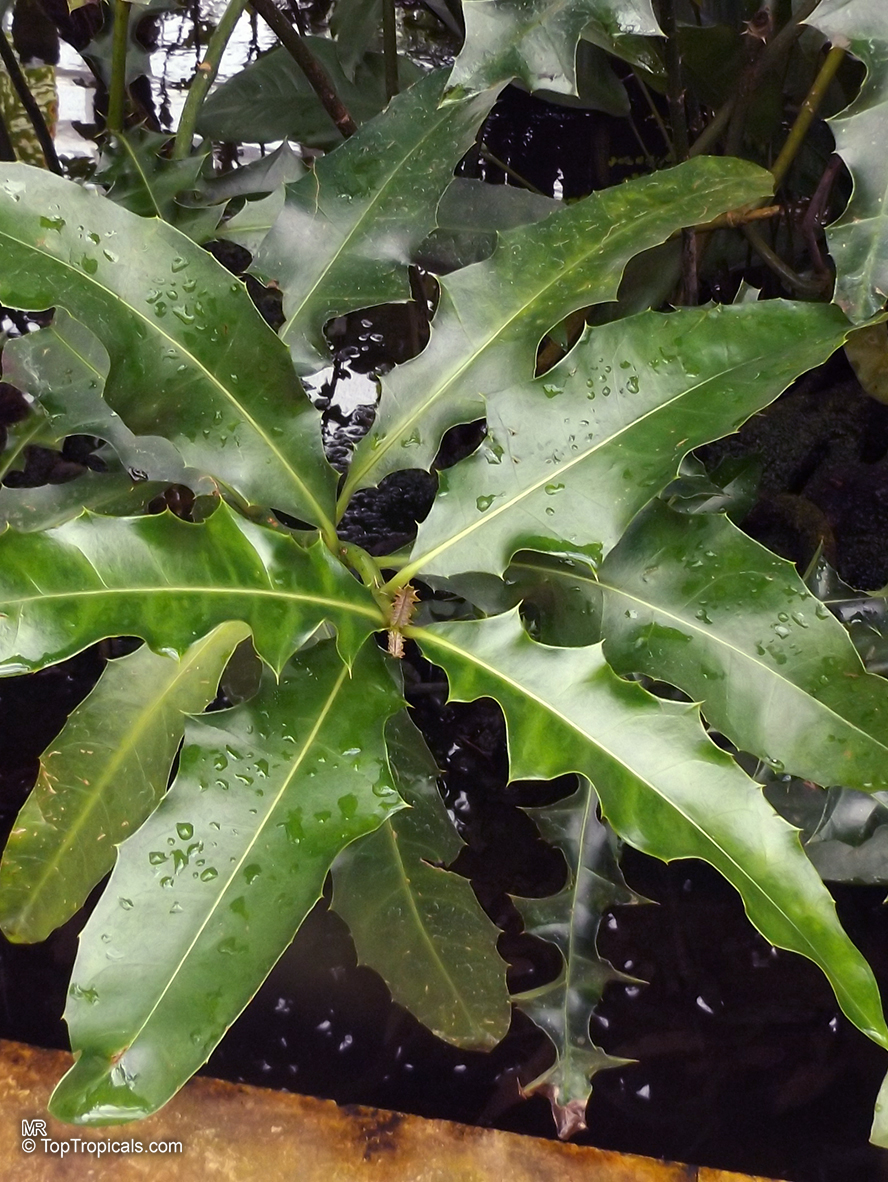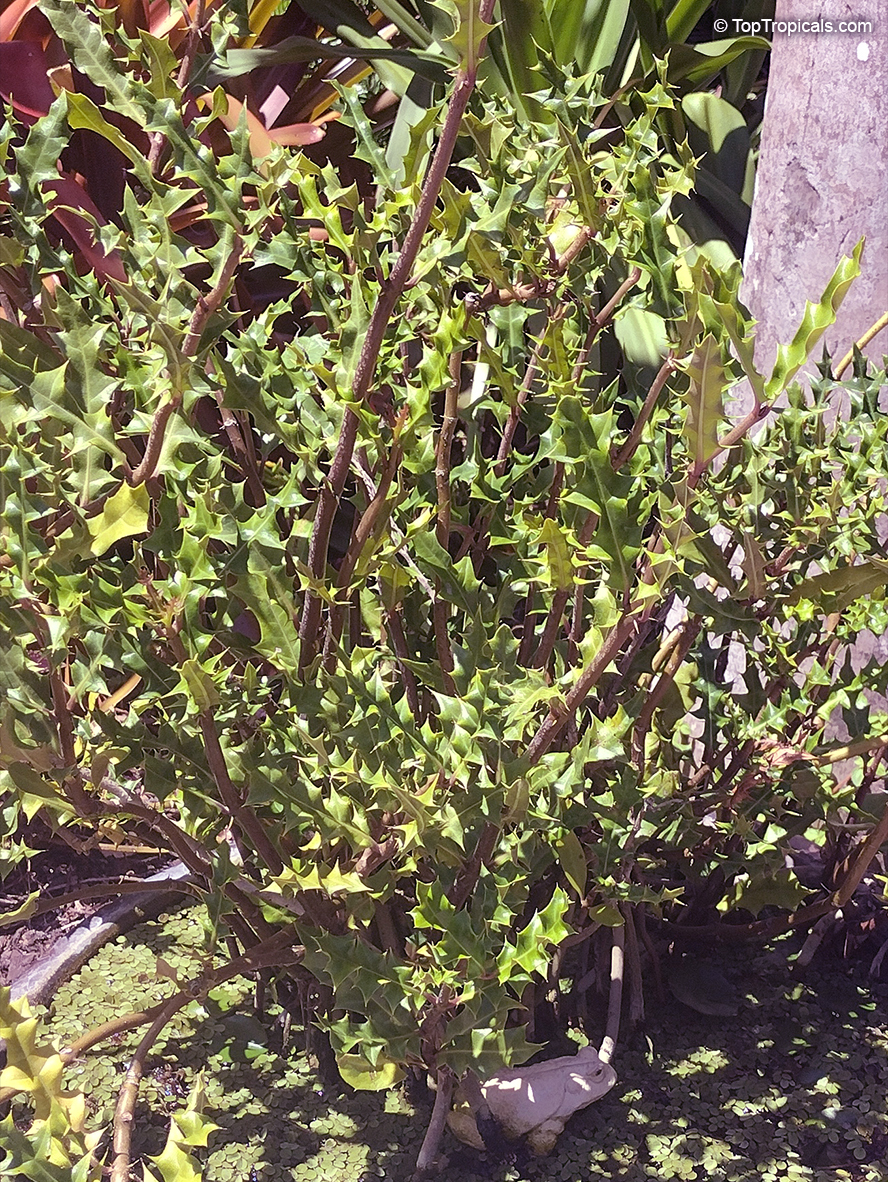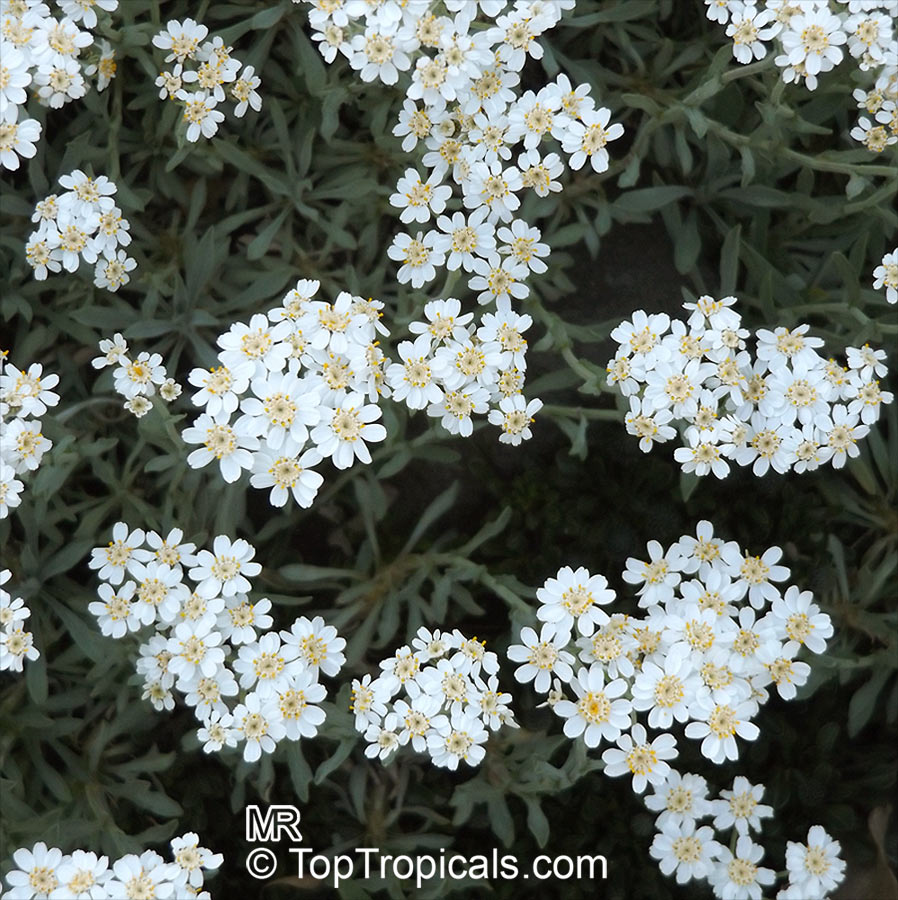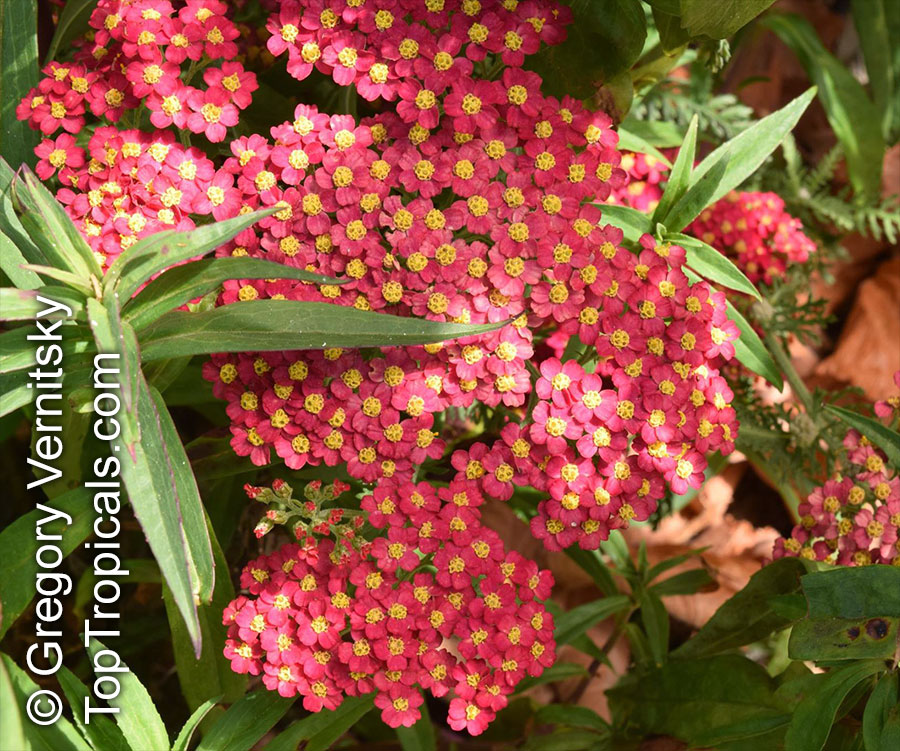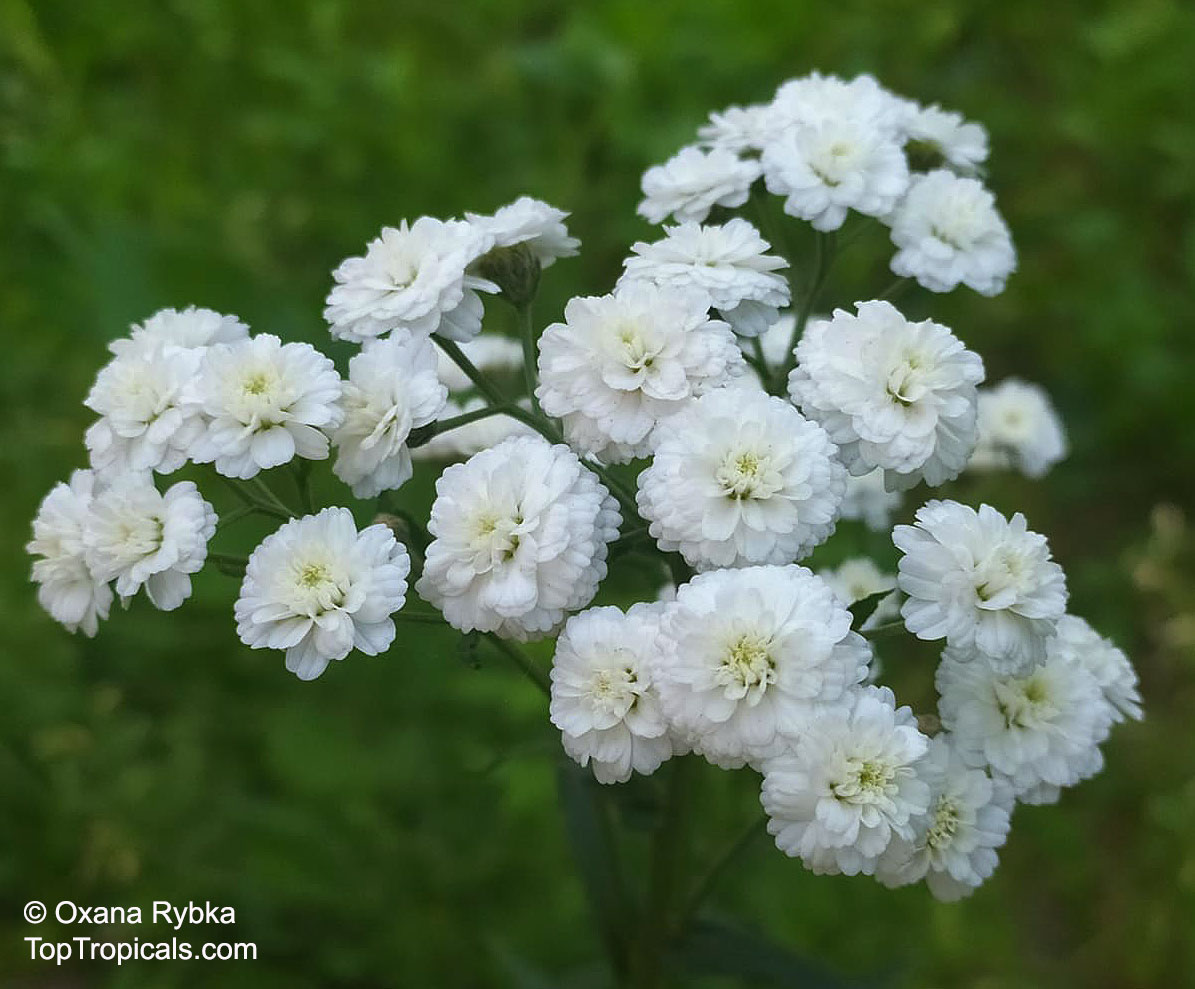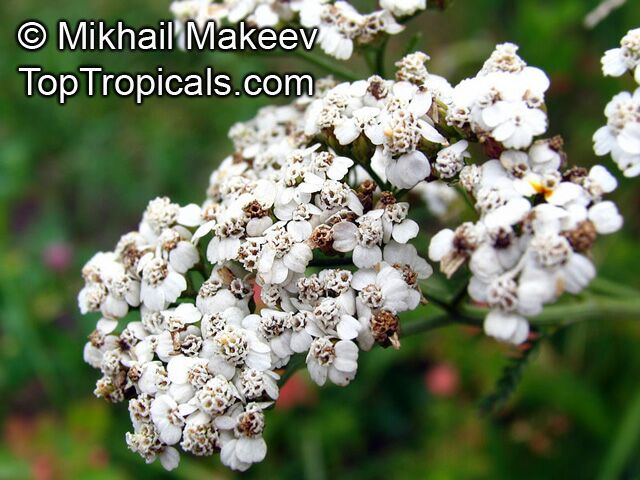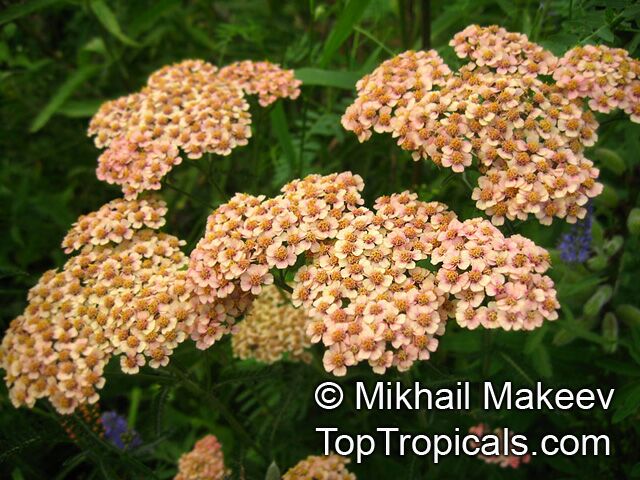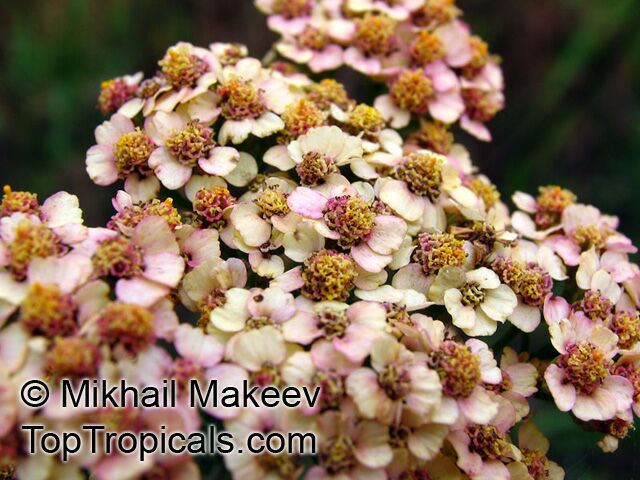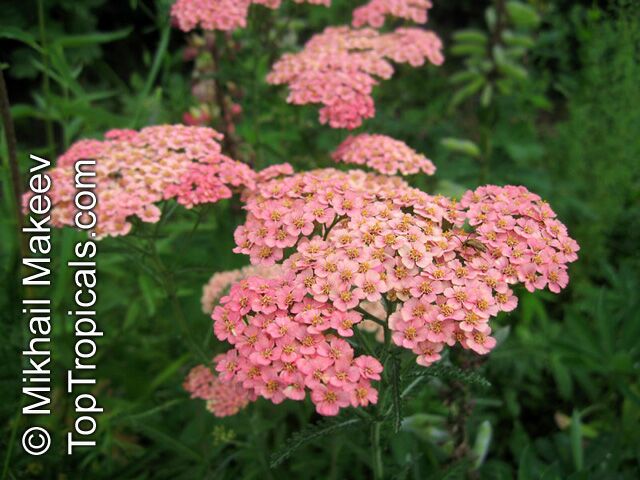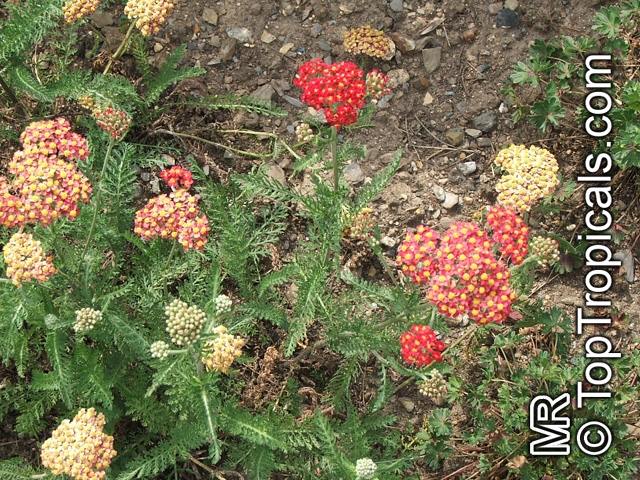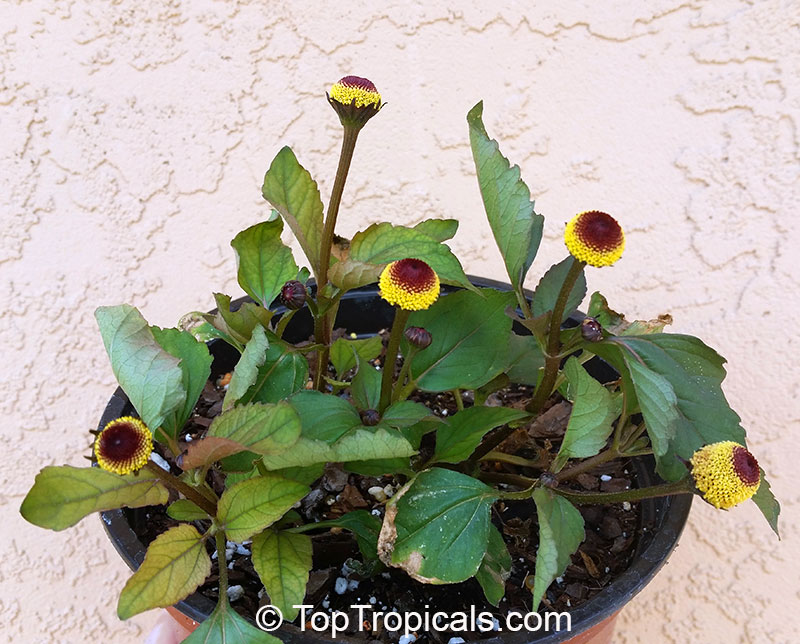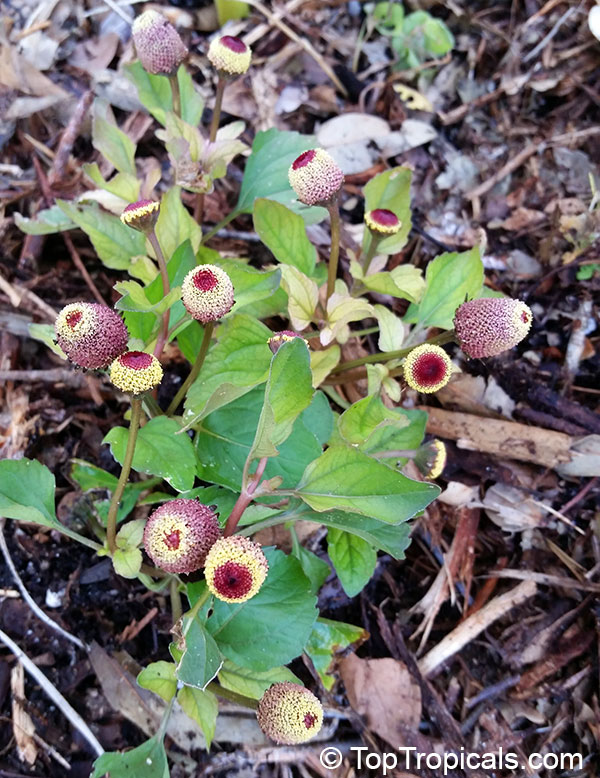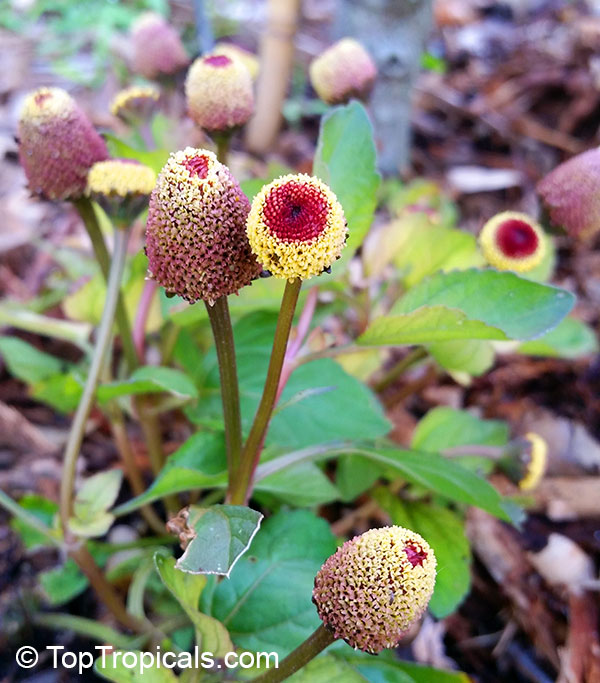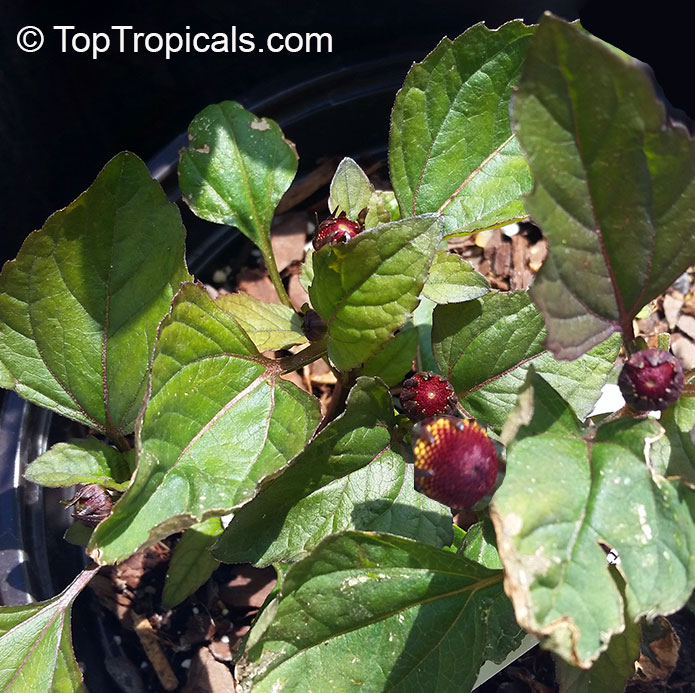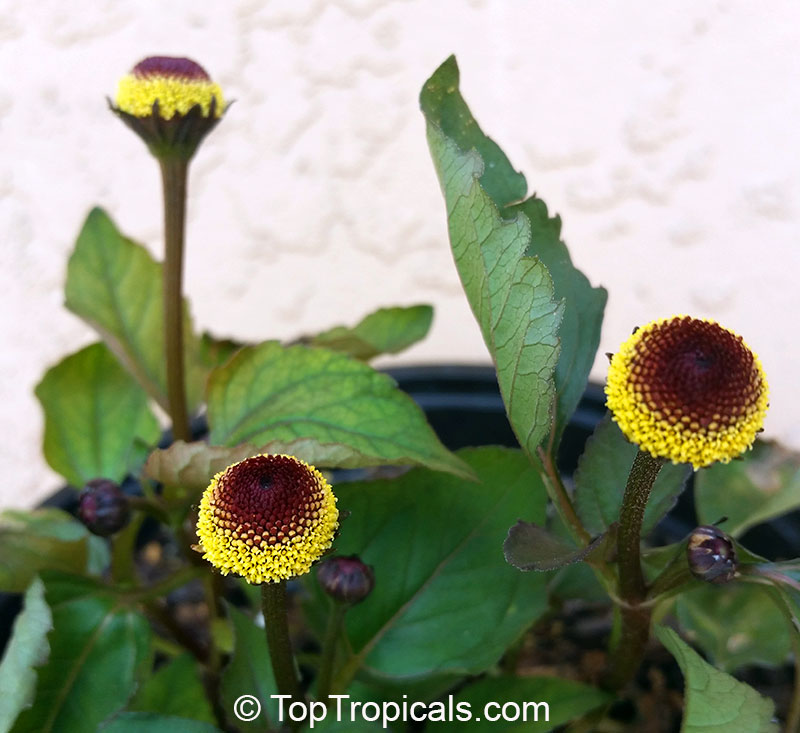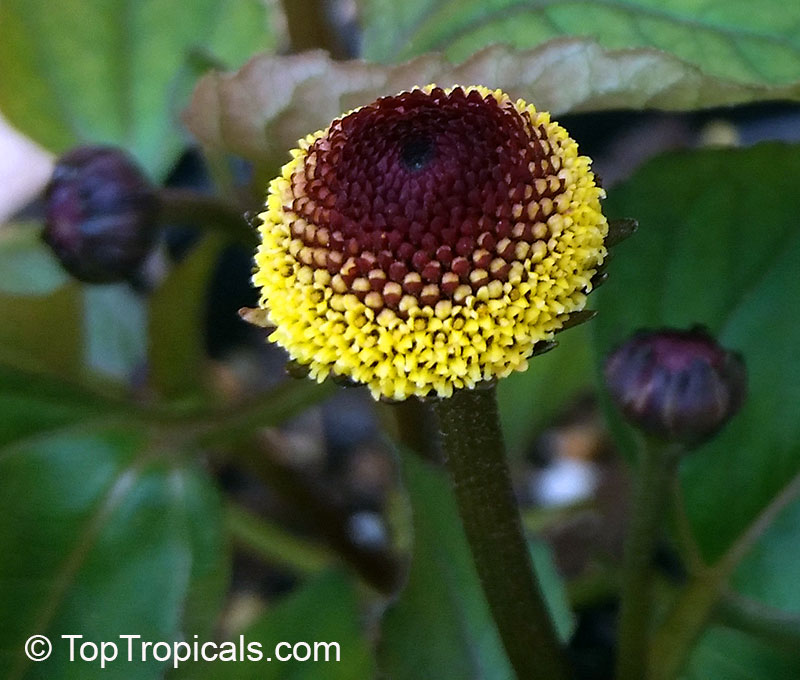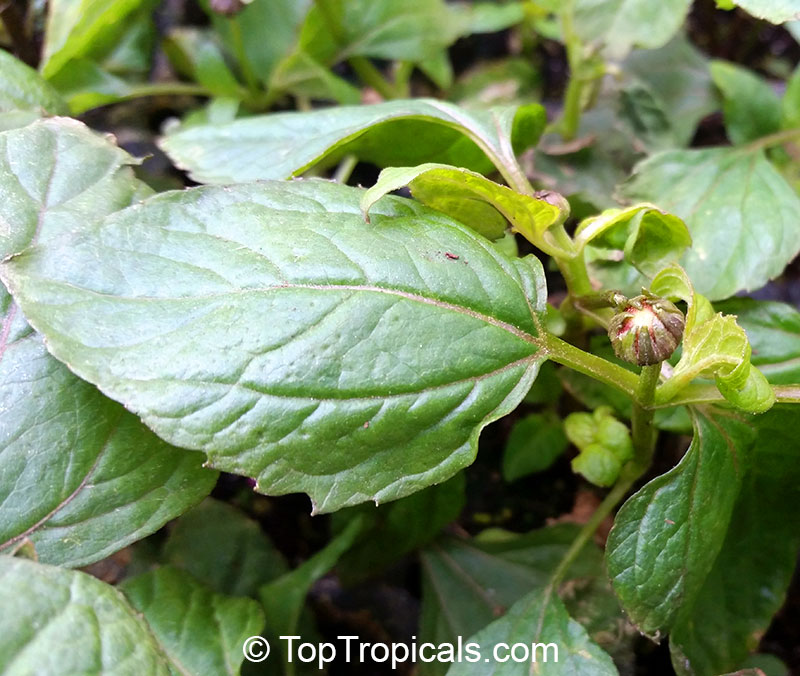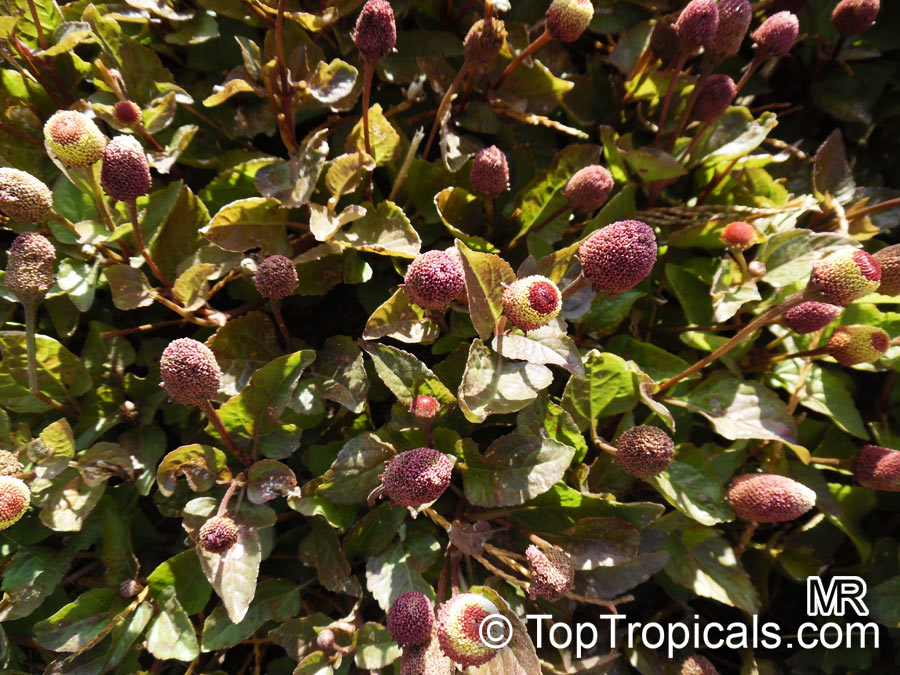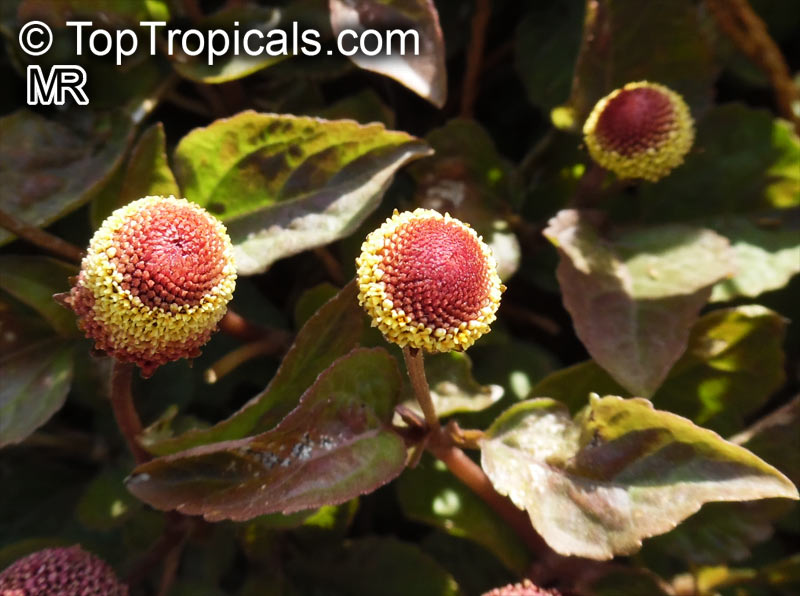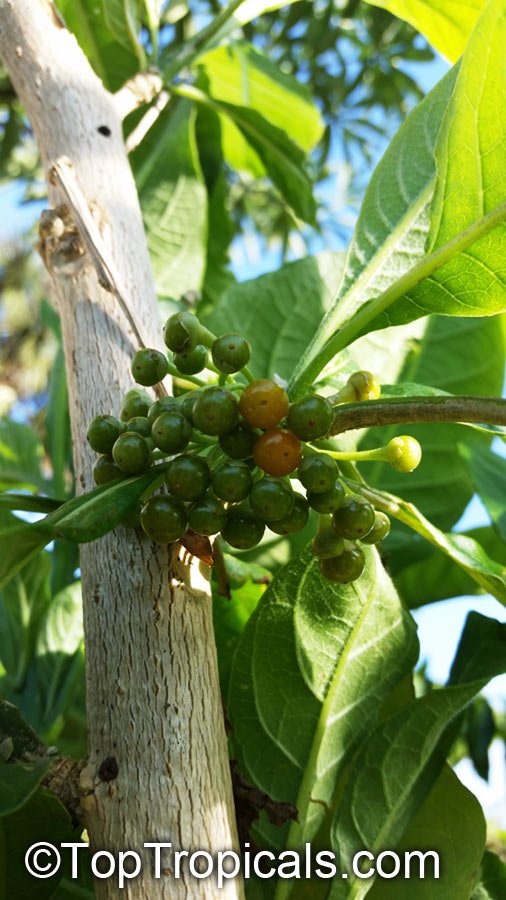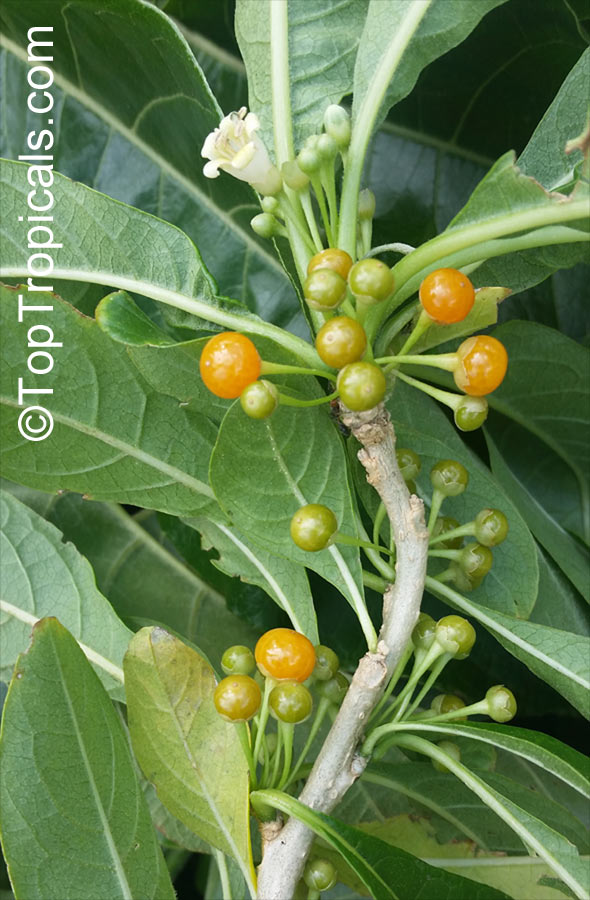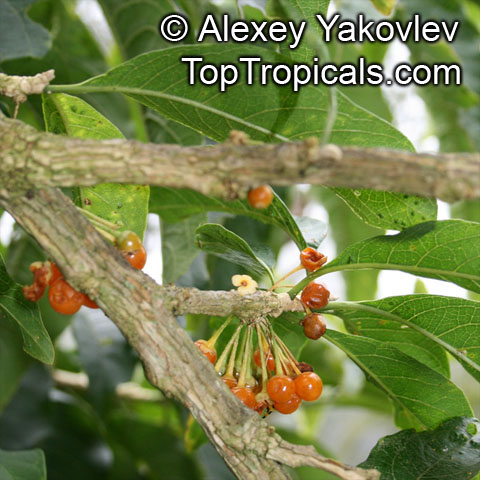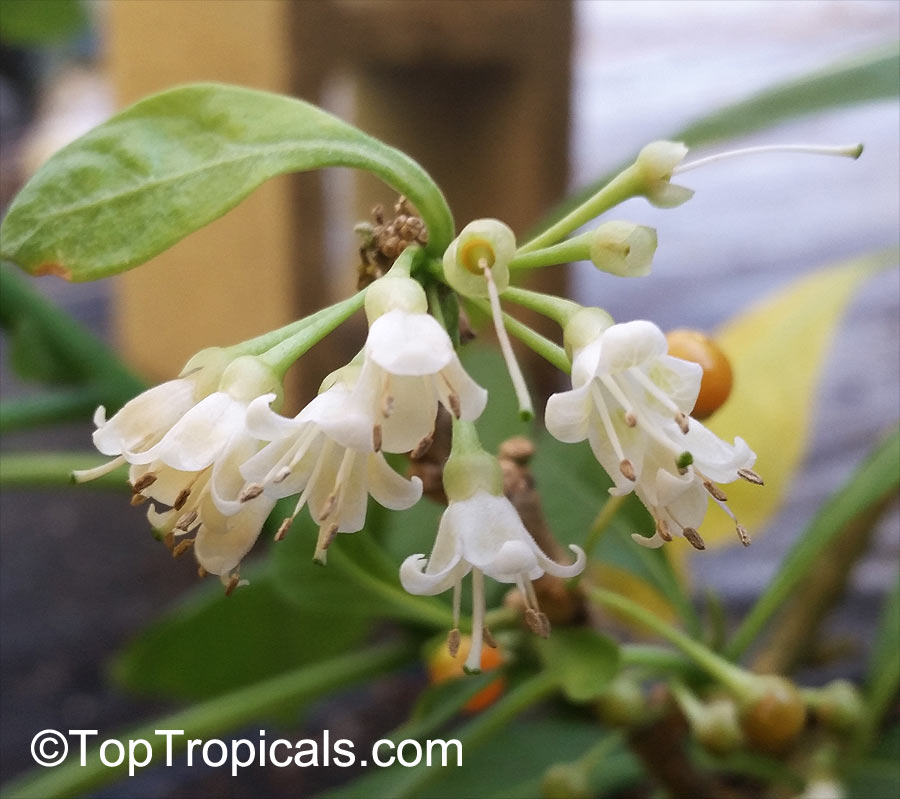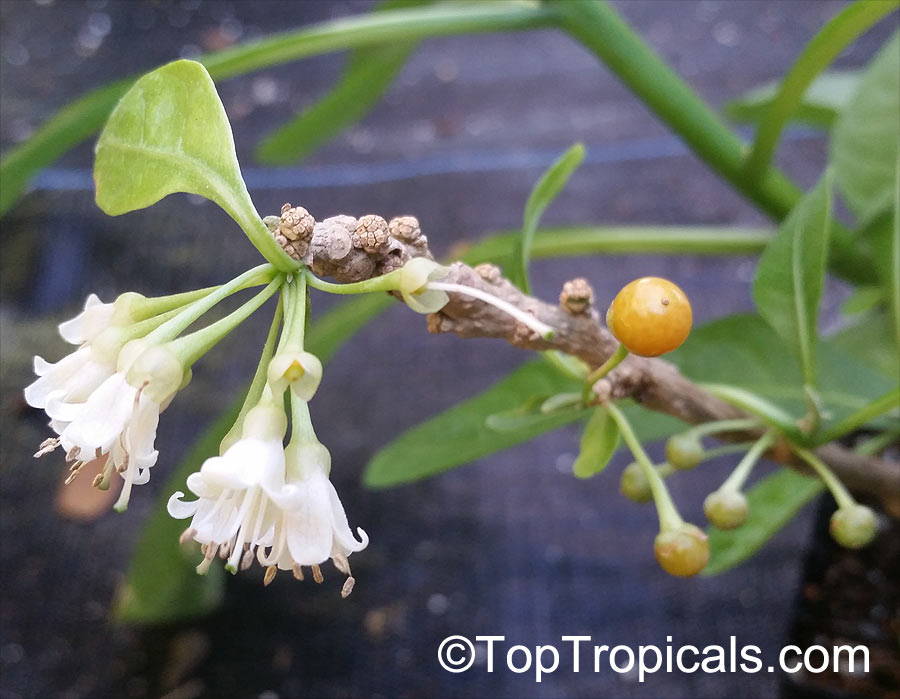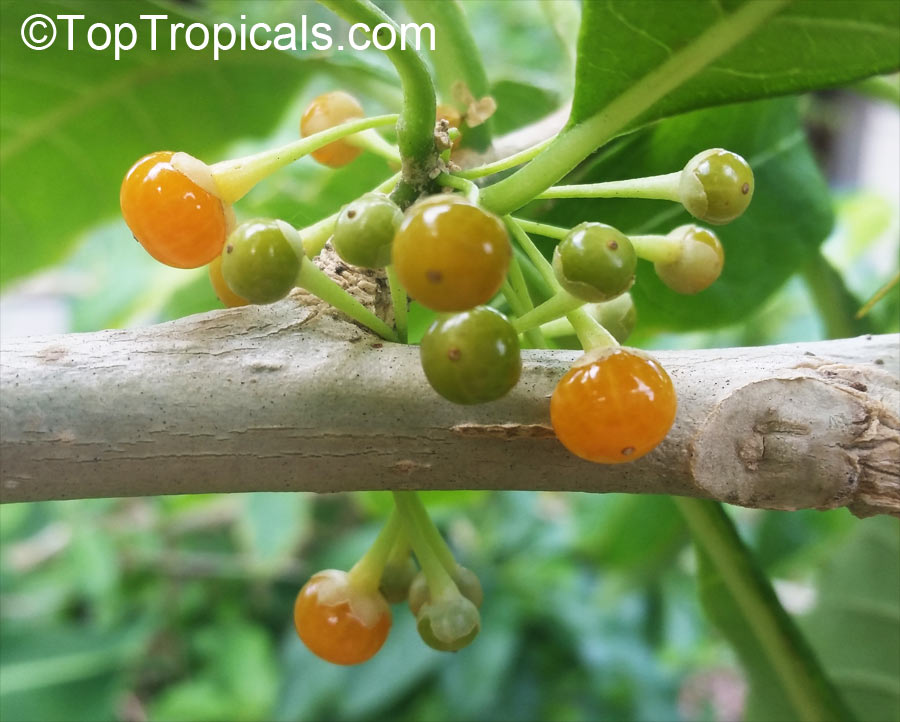Ethnomedical plant - Search results
Top Tropicals Plant Encyclopedia
| Number of plants found: 1021 | Next | 
|
Go to page: | 1 | 2 | 3 | 4 | 5 | Last |
Botanical name: Abelmoschus manihot
Common names: South Sea Salad Tree, Bele tree, Sunset Muskmallow, Sunset Hibiscus, Hibiscus Manihot
Family: Malvaceae
Origin: Southeast Asia
Hardiness: 20°F









Its palmate leaves are highly dissected with five to nine deep lobes. The largest, widest leaves form at the base of the plant, where there may be some small side branches. The blooms (4-5" in diameter) are pale yellow with a dark maroon to purple center eye, and emerge from the terminal end of a central flowering stalk.It is easily propagated from cuttings, easy to cultivate, relatively disease-resistant and even is considered to be of medicinal value. It is widely planted either along borders of gardens or as an intercrop throughout many traditional gardens in the tropics. A nice flowering addition to the vegetable garden.
Botanical names: Abelmoschus moschatus, Hibiscus abelmoschus
Common name: Musk Mallow
Family: Malvaceae
Origin: South East Asia










Valued as an ornamental plant, due to its colorful and attractive flowers. The leaves are alternate, rough, hairy, heart-shaped or 3-5 lobed with serrated margins. Flowers are Hibiscus-like.
Cultivated for aromatic oil from seeds. Young leaves, shoots, and unripe seedpods are cooked as a vegetable.
Botanical name: Abroma augusta
Common name: Devil Cotton
Family: Malvaceae
Subfamily: Sterculioideae
Origin: Tropical Asia








The leaves have an oblong shap.The seeds are contained in a cotton-like envelope. Dark, maroon flowers are formed in terminal panicles. The leaves and stems are covered with soft, bristly hairs that are extremely irritating to the touch.
Botanical name: Abrus precatorius
Common names: Buddhist rosary bead, Rosary pea vine, Carolina muida, Deadly crab's eye, Lucky bean, Prayer beads, Weather plant, Wild liquorice
Family: Fabaceae
Subfamily: Faboideae
Origin: India, Sri Lanka, Thailand







Abrus precatorius has small pretty purple flowers located at the end of the stalks. Fruits are short, inflated pods, splitting open when mature to reveal the round; hard and shiny seeds which are scarlet, but black at the base. Seeds contain abrin, one of the most toxic plant poisons known.
Botanical names: Abutilon grandifolium, Sida grandifolia
Common names: Hairy Indian Mallow, Hairy Abutilon
Family: Malvaceae
Origin: South America





Botanical names: Abutilon indicum, Sida indica, Abutilon hirtum
Common name: Indian mallow
Family: Malvaceae
Origin: Southeast Asia





Mostly used as an indoor houseplant, the flowering maple is a good alternative for those in climates that aren't suitable for maples to grow naturally. The trunk is somewhat woody, with two to three inch leaves which are quite similar to maple leaves. So far, rarely used as bonsai, but they are readily available and have 2 inch bell-shaped flowers which bloom year-round to recommend them. Shape is usually maintained through pruning, however wiring should work as long as care was taken to protect the branches. These plants do fine in ordinary potting soil.
Abutilon indicum var. hirtum (Abutilon hirtum) is harvested from the wild for local use as a source of fibre, medicines and food.
Botanical name: Acanthus ilicifolius
Common names: Holly-leaved Acanthus, Sea Holly, Holy Mangrove
Family: Acanthaceae
Origin: India, Polynesia












Acanthus ilicifolius, or Holly-leaved Acanthus, is a perennial plant native to India and Polynesia. This plant can reach a large size, typically growing up to 5-10 ft tall. It has a semi-woody and sprawling structure, with thin stems coated in a glossy green hue speckled with white. The leaves are oval-shaped with a pair of spines at each angle.
Holly-leaved Acanthus prefers full sun to semi-shade and can be grown either in a bog or aquatic environment. It requires plenty of moisture as well as regular watering to stay healthy and vibrant. This plant also tolerates flooding and salty conditions near the seaside very well. Therefore, it can be a great addition to any garden in the USDA hardiness zone of 8-11.
The Holly-leaved Acanthus is adorned with clusters of beautiful blue, lavender and purple flowers. It is also an ethnomedical plant, hence its use in traditional medicine. Its stems are thorny or spiny and may require careful handling when handling.
When growing Holly-leaved Acanthus in a pot, it is essential to keep the soil moist and use quality organic potting soil. A location with some protection from the elements is preferred in colder regions as well as a winter mulching of thick straw to prevent frost damage. Additionally, it is important to keep an eye out for any pests and diseases that may occur and act appropriately to keep the plant healthy.
Botanical name: Achillea sp.
Common names: Yarrow, Thousand-leaf, Milfoil, Sneezewort, Soldier's Friend
Family: Asteraceae










Common Yarrow is a drought tolerant species of which there are several different ornamental cultivars.
The herb is purported to be a diaphoretic, astringent, tonic, stimulant and mild aromatic. Yarrows are well suited to the wildflower garden. The soft, lacy foliage makes an interesting and beautiful groundcover. The flowerheads are used in arrangements, fresh and dried.
Botanical names: Acmella oleracea, Spilanthes oleracea
Common names: Toothache Plant, Paracress, Botox Plant, Jambu
Family: Asteraceae
Origin: Brazil









Toothache Plant is a medicinal herb that has been used for generations to manage the pain of toothaches. Both the leaves and the attractive golden flowers can be used as a natural anesthetic. Simply chew the leaves or flowers for a few seconds then you will experience a tingling and numbing sensation in your mouth. An infusion or tincture made from the Toothache Plant is said to promote gum and throat health due to its strong antibacterial properties. For culinary purposes, small amounts of shredded fresh leaves are said to add a unique flavor to salads. Cooked leaves lose their strong flavor and may be used as leafy greens. Both fresh and cooked leaves are used in dishes such as stews in northern Brazil. They are combined with chilis and garlic to add flavor and vitamins to other foods. The use of jambu extract as a food flavor is described as having an odor of citrus, herbal, tropical or musty odor, and its taste can be pungent, cooling, tingling, numbing, or effervescent.
Acmella Oleracea extract is considered a natural alternative to Botox. Applied topically, Acmella Oleracea reportedly reduces muscle tension, reducing facial wrinkles caused by tense or contracted facial muscles. It is considered a natural muscle relaxant and has been traditionally used as an herbal Orajel of sorts, thanks to the presence of analgesic alkylamides called spilanthol. This spilanthol is thought to have the same paralyzing effects on facial muscles as it does on gums, reducing wrinkles by relaxing the skin. It's seen in topical formulas and can easily penetrate the skin, inhibiting contractions in subcutaneous muscles.
The plant is a small, erect, it grows quickly and bears gold and red inflorescences. It is frost-sensitive but perennial in warmer climates. Can be grown in a container and as a houseplant.
Botanical name: Acnistus arborescens
Common names: Hollowheart, Wild Tabbaco
Family: Solanaceae
Origin: Central and South America









Acnistus arborescens is a large shrub native to Central and South America known as Hollowheart. In its natural habitats, it grows in full sun and reaches heights of as high as 10 feet, or as a small tree up to 20 feet in height. It is also known for its abundance of white, off-white, blue, lavender, and purple flowers, as well as for its ability to attract butterflies and hummingbirds.
This plant is best grown in USDA zone 9-11 in well-draining soil and with regular waterings. In warm climates, it can have year-round growth, while cold climates may require bringing the plant indoors in winter or providing frost protection such as an insulating wrap. If planted in a pot, it is recommended to place it in a sheltered location and use a balanced fertilizer on a regular basis. If a cold snap is predicted, the pot should be moved indoors to a sunny location.
Traditionally, Acnistus arborescens has also been used ethnomedically to treat cancer. However, no scientific evidence is available to attest to its efficacy as an herbal remedy.
In conclusion, Acnistus arborescens is an attractive, fast-growing shrub or small tree that is easy to care for and provides a splash of color to attract hummingbirds and butterflies. While it can have ethnomedical advantages, more research is needed to verify the claims of its healing properties.
| Next |  |
Use link to repeat this search:
https://toptropicals.com/cgi-bin/garden_catalog/cat.cgi?search_op=and&keyword_op=and&language=e&number=10&no_change_lang=1
&v1=med&user=tt&sale=1&first=0
